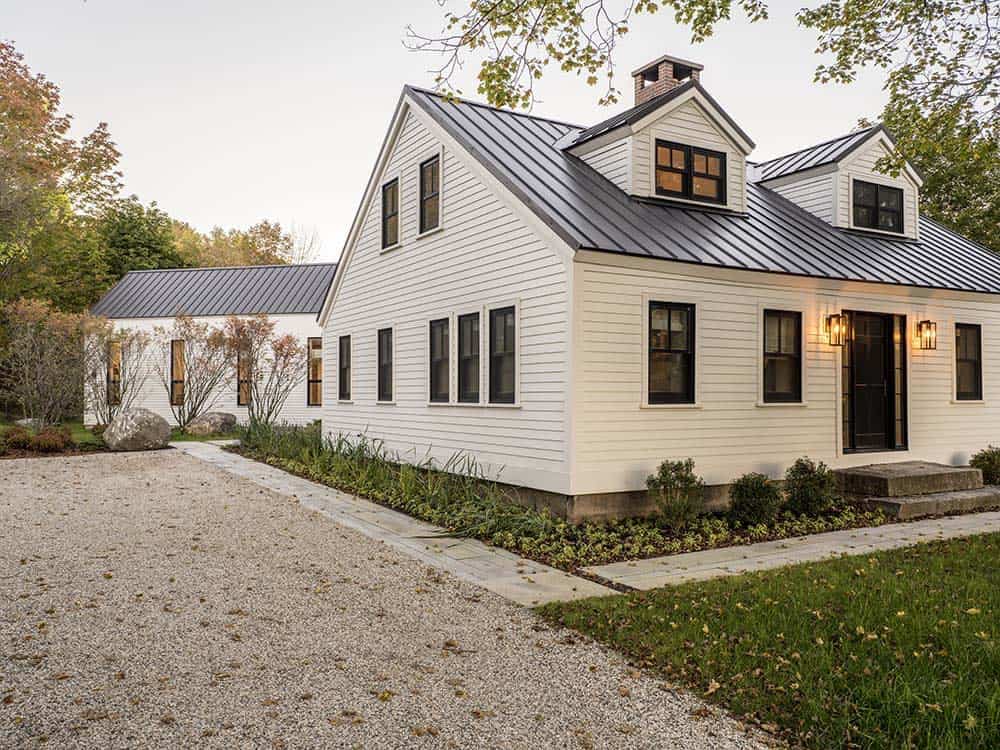
A family farmhouse has been completely reimagined by Kaplan Thompson Architects, nestled on a sprawling 252-acre property of fields and forest in the Lakes Region of New Hampshire. Rich with generations of history, the property is defined by two homes nestled into the steep hillside. The lower farmhouse, a 150-year-old colonial cape, had remained untouched for half a century and required significant updates before it could be called home.
Originally a guest house, it retained its modest size, low ceilings, and charming irregularities characteristic of its era, with a deteriorating barn nearby. The architect’s challenge was to modernize the house, ensuring comfort and practicality for aging in place and hosting growing families, all while honoring its storied heritage and unique character.
Continue below to see how the project team collaborated to transform this family farmhouse into a breathtaking 3,500-square-foot home featuring four bedrooms and three bathrooms, perfect for both everyday living and entertaining.
DESIGN DETAILS: ARCHITECTURE Kaplan Thompson Architects INTERIOR DESIGN Heidi Lachapelle Interiors BUILDER K.P. Hood Construction MILLWORK Northe Woodworking
Adapting the farmhouse for 21st-century living involved enhancing both space and performance. In collaboration with Heidi LaChapelle Interiors, the architects expanded, lightened, and refinished the farmhouse with a new kitchen, dining area, and updated bathrooms and interior details throughout.
The project uses traditional New England construction methods to bring the best of the past into the future by adding the technical benefits of superinsulation and advanced air sealing. The existing farmhouse underwent a deep energy retrofit that stripped and rebuilt its envelope, adding insulation and rainscreen siding and upgrading the original windows with triple-paned glass.
An aging boiler was removed and replaced with all electric systems, including efficient air source heat pumps and fresh air ventilation systems with filtration and heat recovery. A substantial solar array installed atop one of the property’s several barn structures brings the entire farm to Net Zero Energy.
Heidi LaChapelle thoughtfully designed the interiors of the new and old spaces with their own distinct yet complimentary aesthetics, pairing antique fixtures and finds with practical, contemporary elements.
The floor plan was reimagined to create a more open layout, removing unnecessary walls and raising ceilings for a sense of spaciousness. Upstairs, the bedrooms were updated to offer cozy accommodations for both the owner’s children (and future grandchildren).
What We Love: This New Hampshire farmhouse provides a family with a completely refreshed home that features a mix of new and old, brimming with charm and character. We love all of the attention to detail throughout this home and how the team collaborated to ensure this home would work to accommodate the needs of multi-generational living. Overall, this dwelling has been beautifully refinished, from the gorgeous kitchen to the cozy bedrooms.
Tell Us: What elements do you find most appealing in the redesign of this family farmhouse? Let us know in the Comments below, we love reading your feedback!
Note: Be sure to check out a couple of other spectacular home tours that we have featured here on One Kindesign in the state of New Hampshire: A lakeside camp-like home provides a woodland escape in New Hampshire and Tour this spectacular lakeside dream home in New Hampshire.
In the footprint of the former barn area, a 1,600-square-foot addition now houses an art studio, loft, and ground-floor bedroom suite necessary for aging in place.
Gabled metal rooflines and cedar siding harmonize the various connected wings of this New Hampshire farmhouse. The new addition intentionally holds to the vernacular of farmhouse structure, evoking the famous northeast tradition of “big house, little house, back house, barn”.
Oversized windows and delicate trim modernize and amplify the latent minimalism of colonial architecture, adding light and loftiness to a traditionally heavy form. The addition honors the heritage of its site with local pine and hemlock timber framing and incorporation of historic materials salvaged from the farmstead.
PHOTOGRAPHER Erin Little

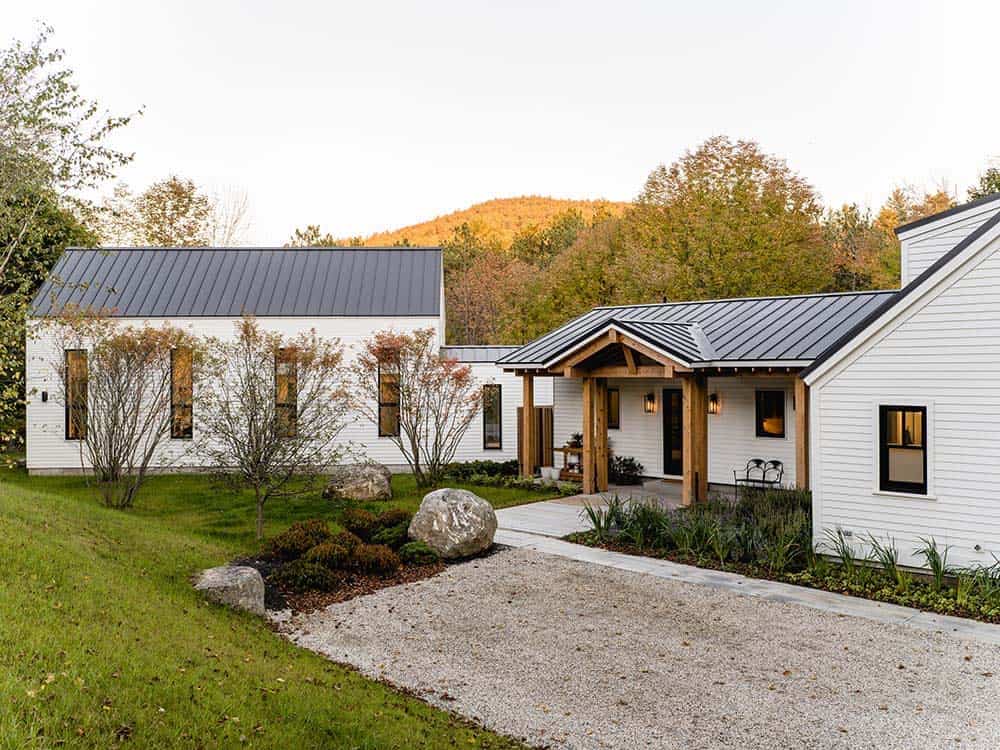
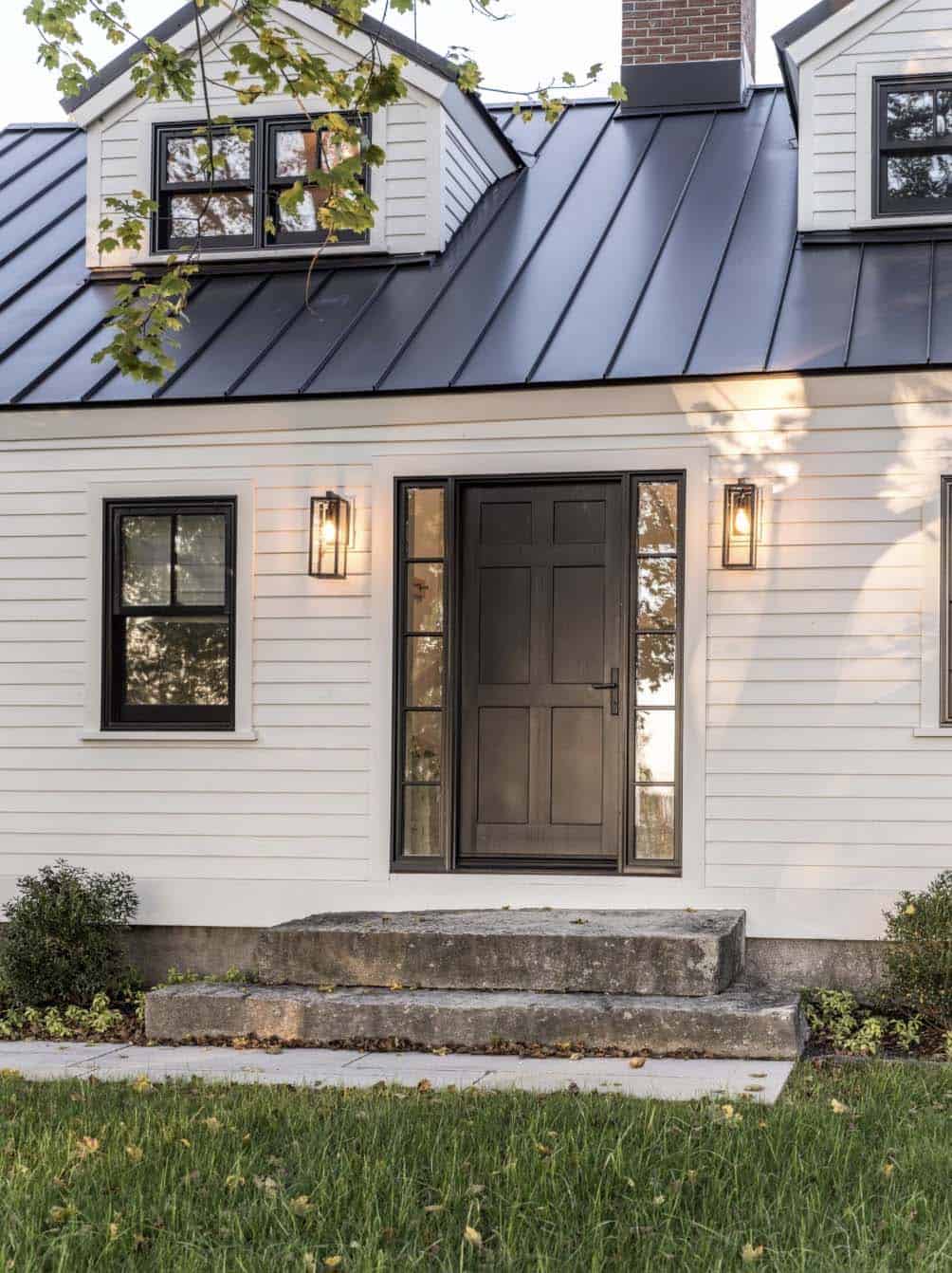
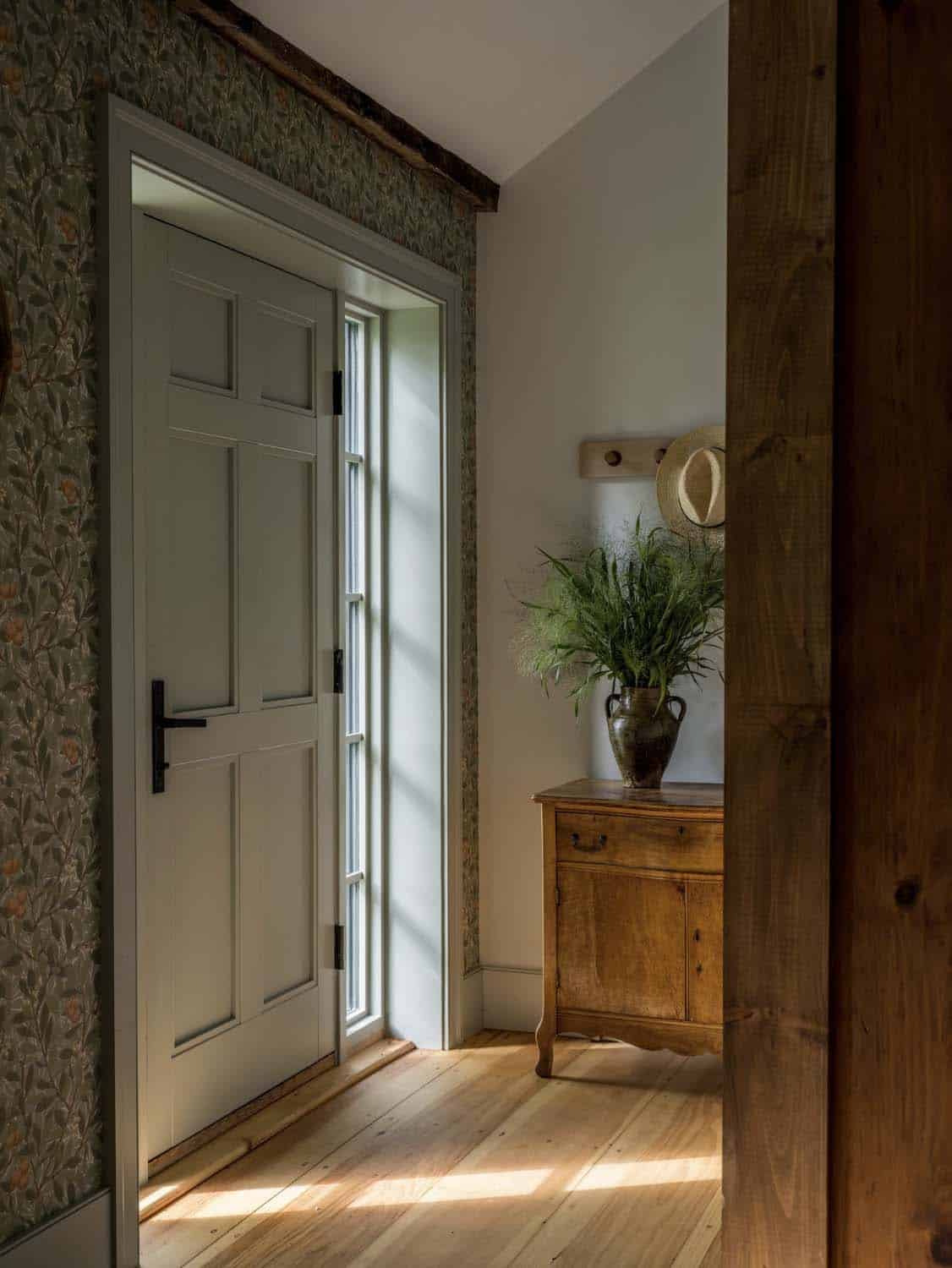
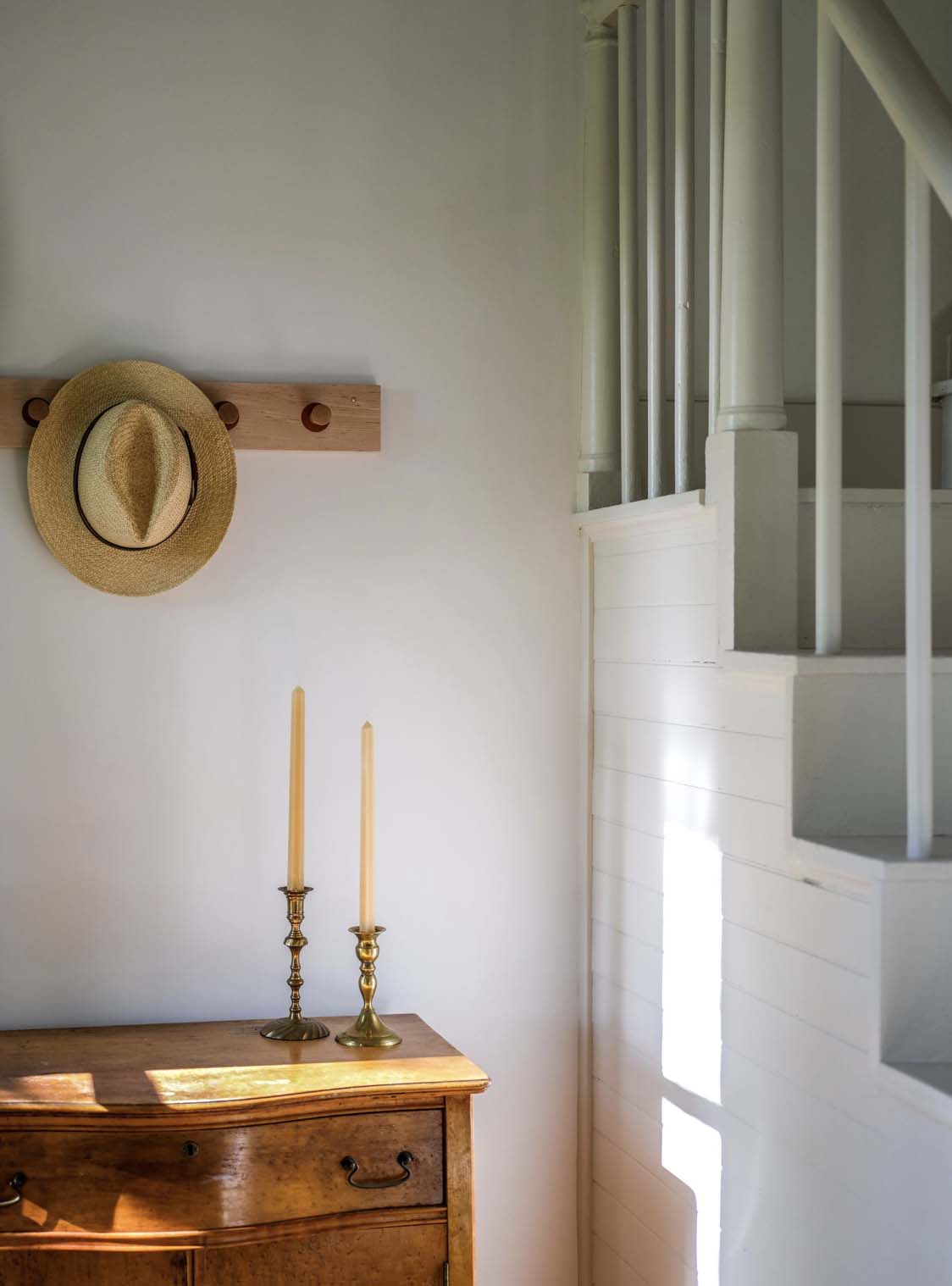
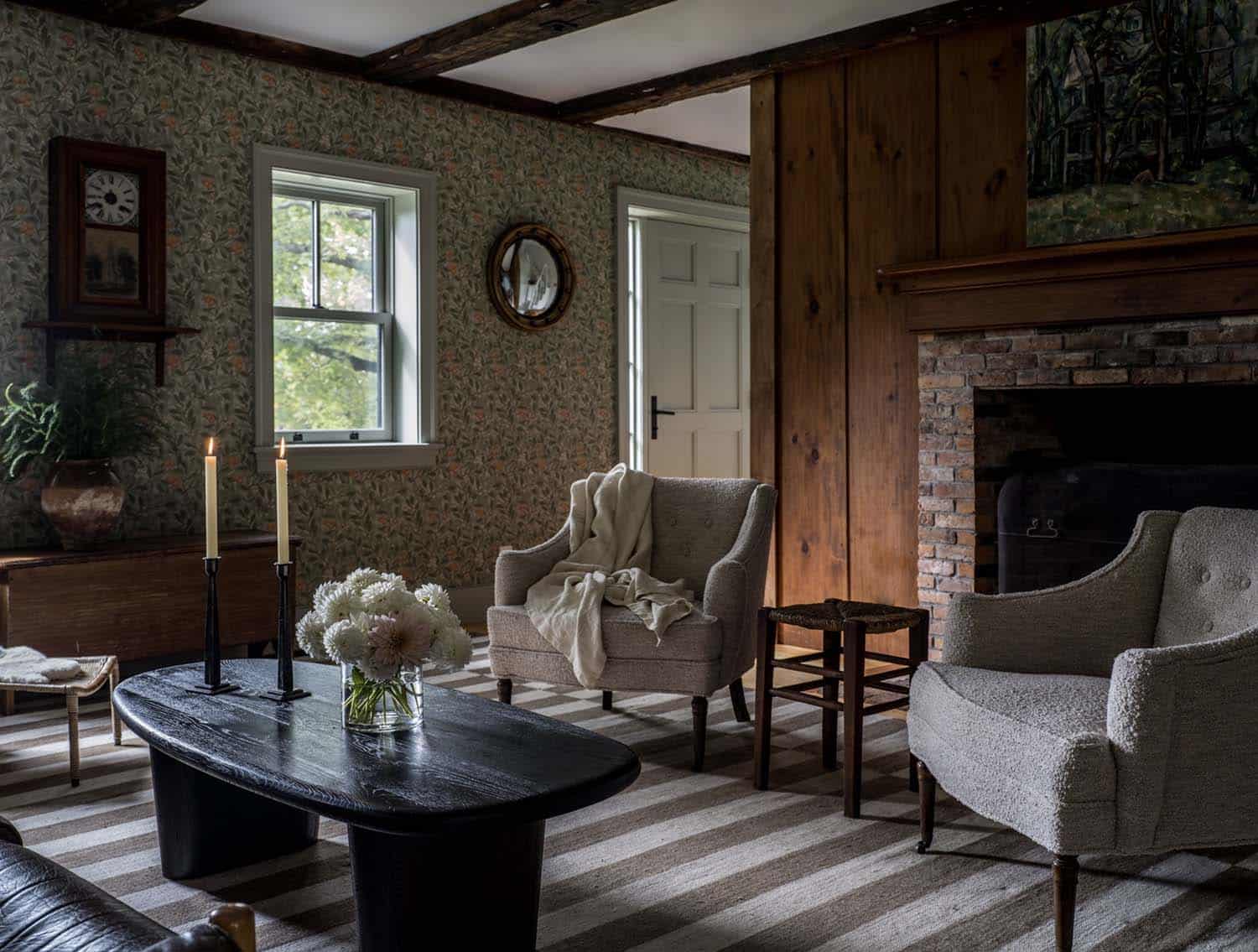
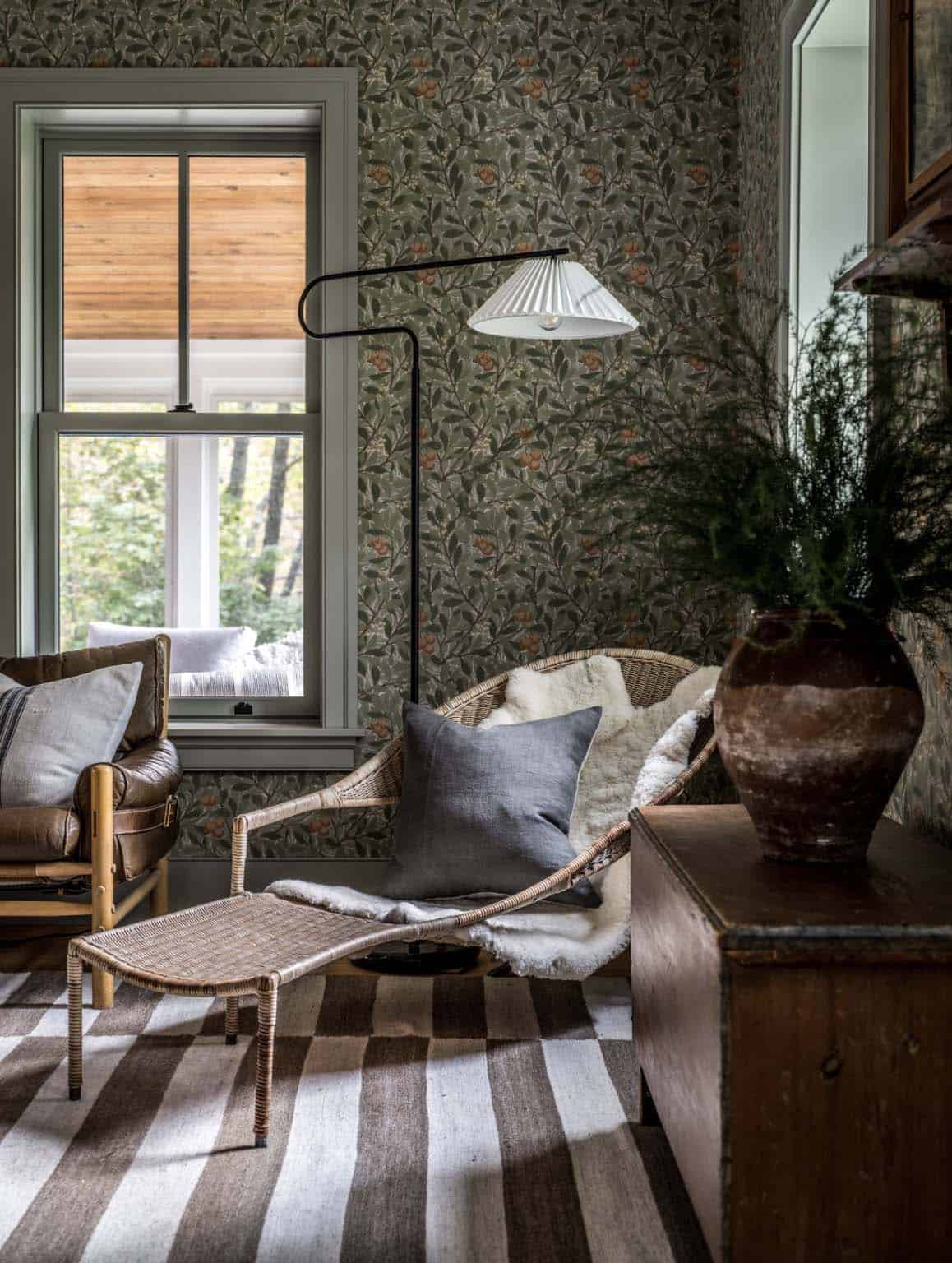

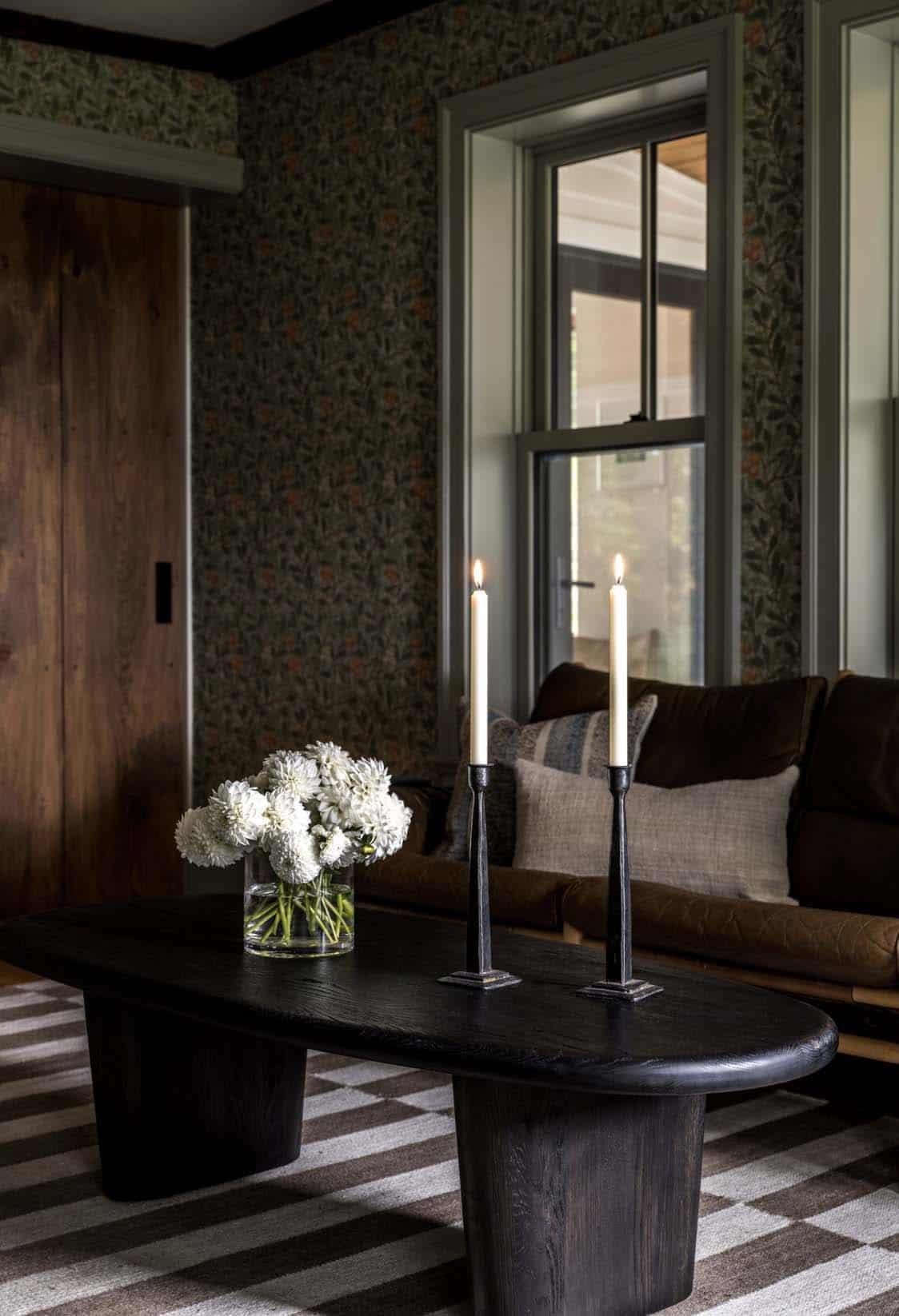

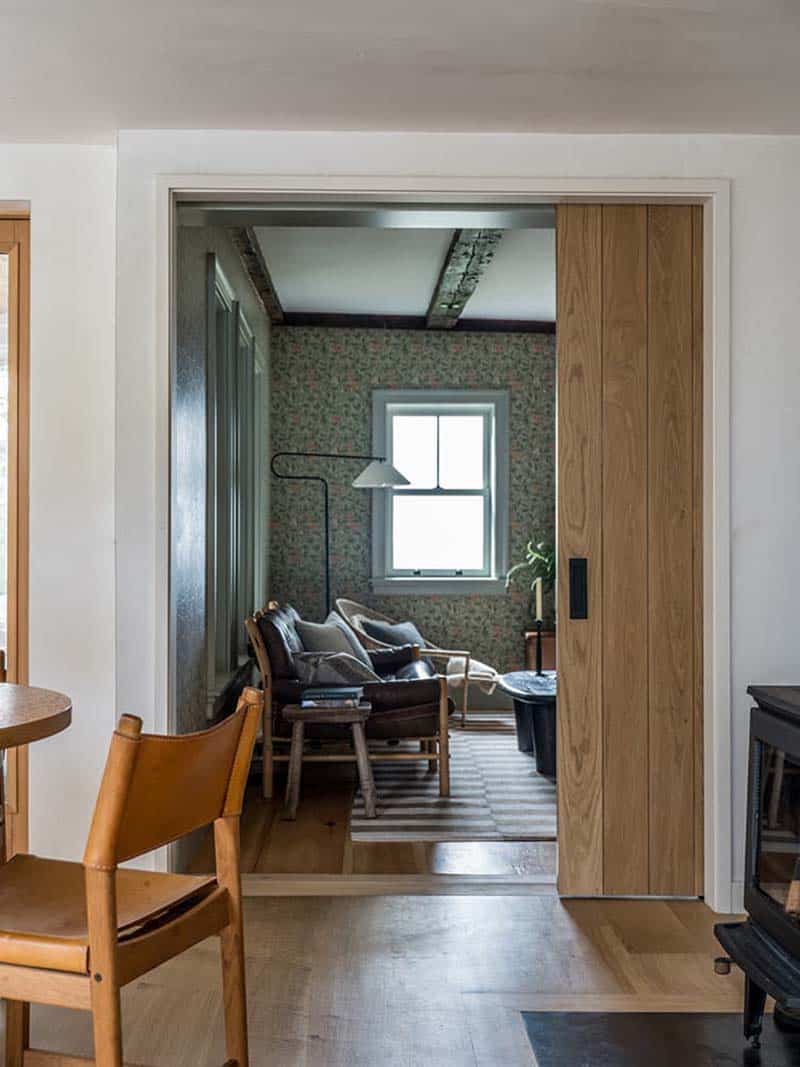
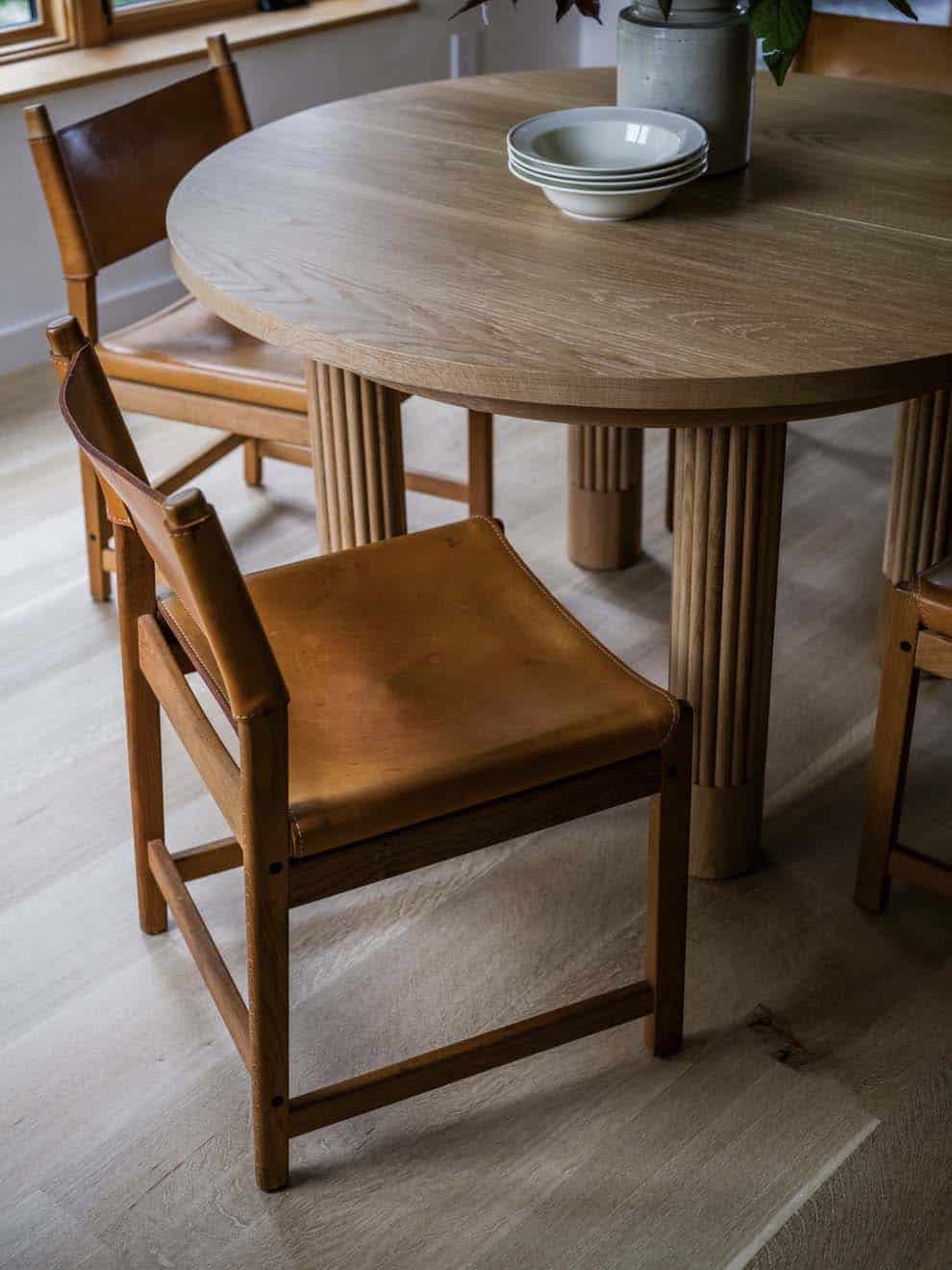
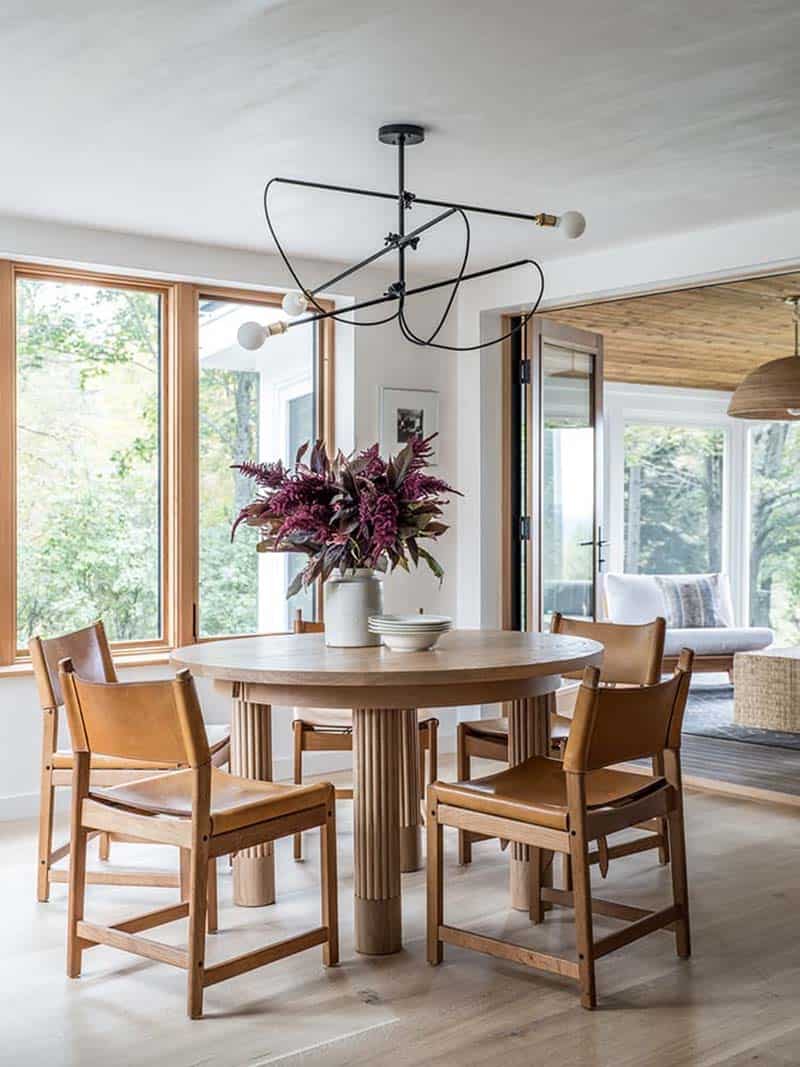
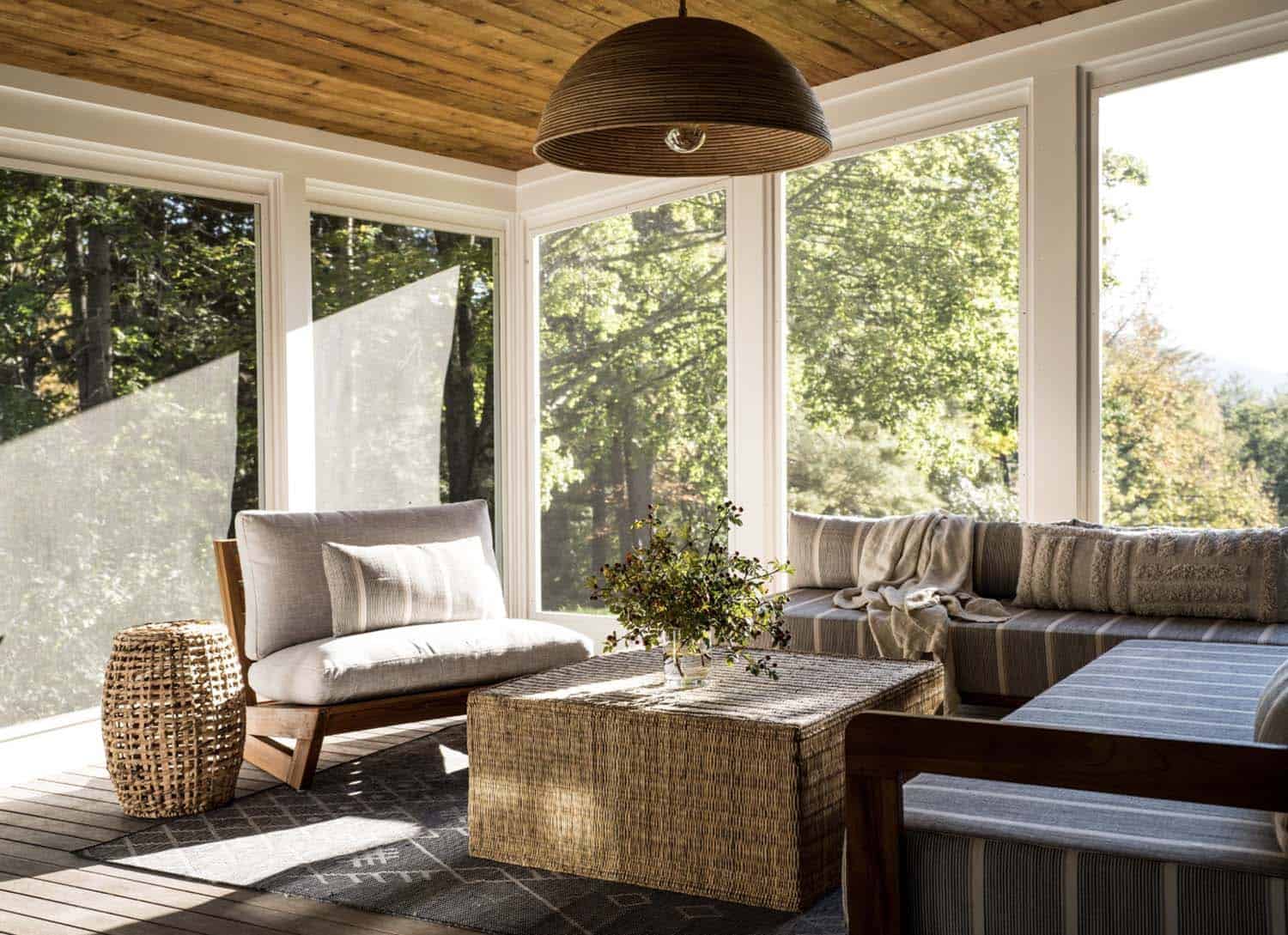
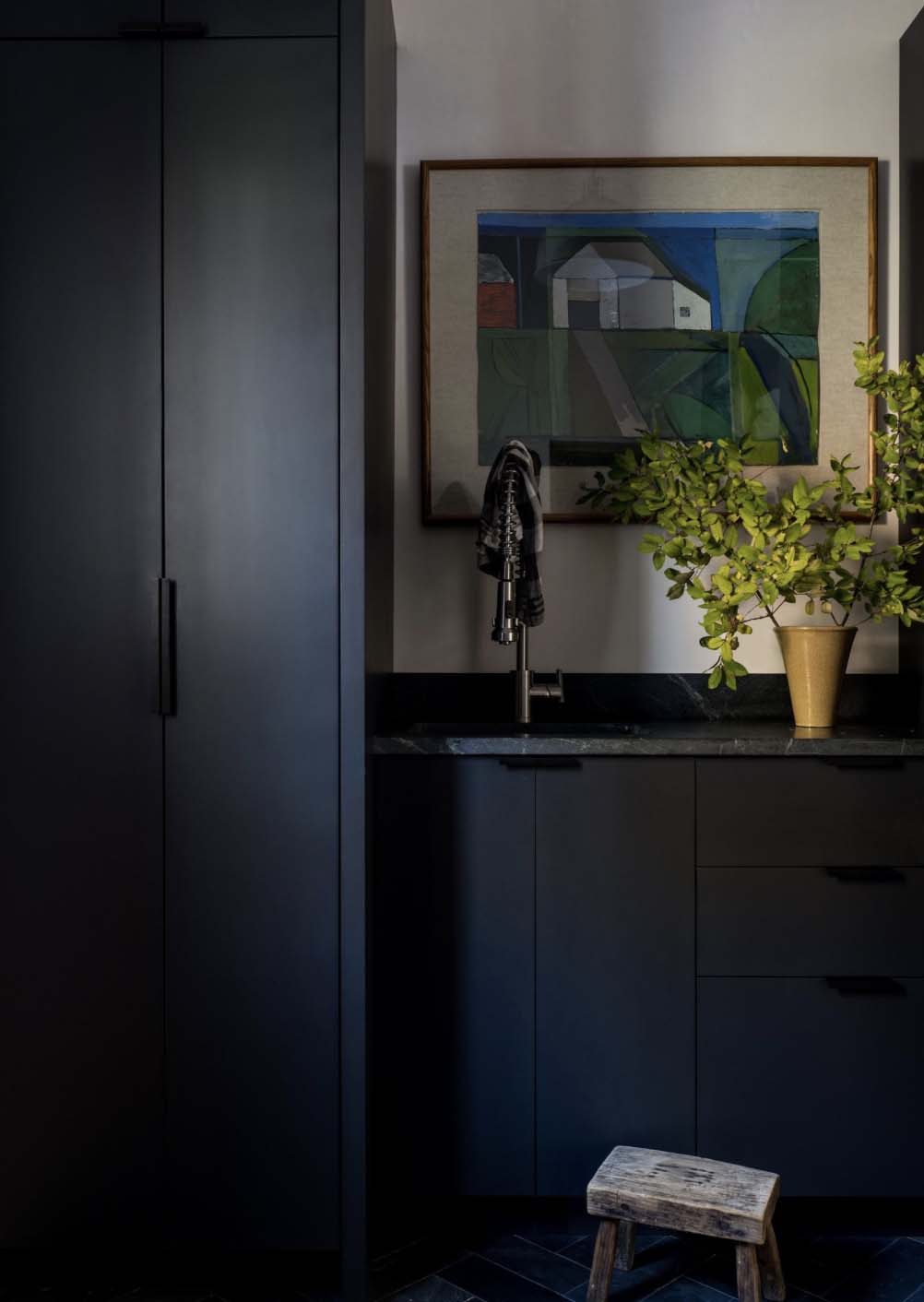
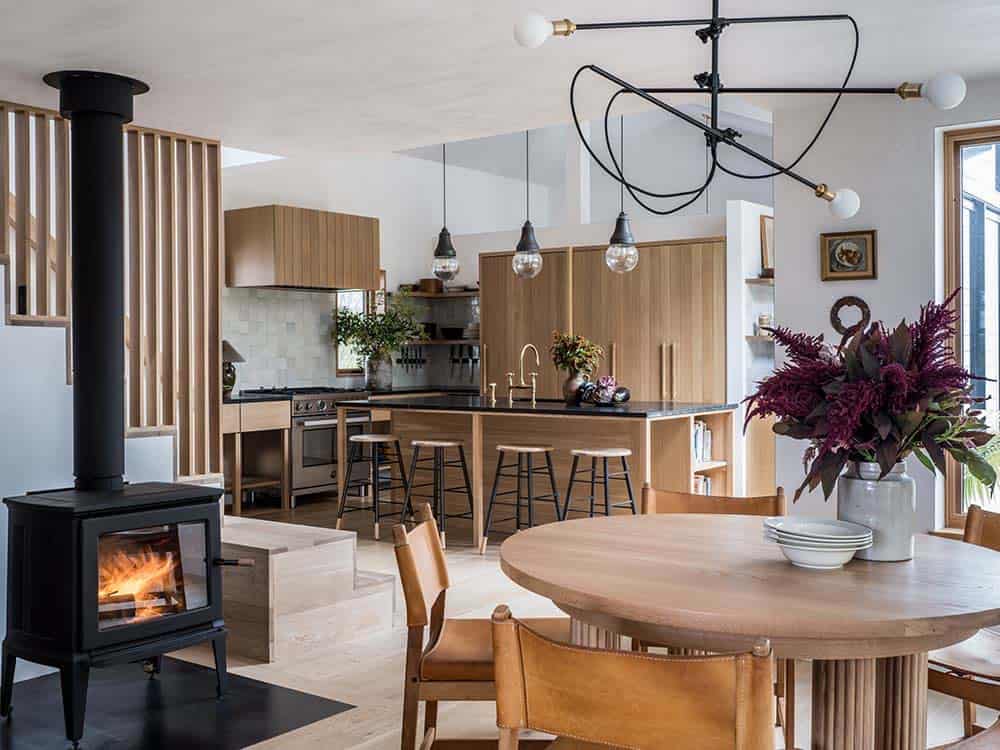
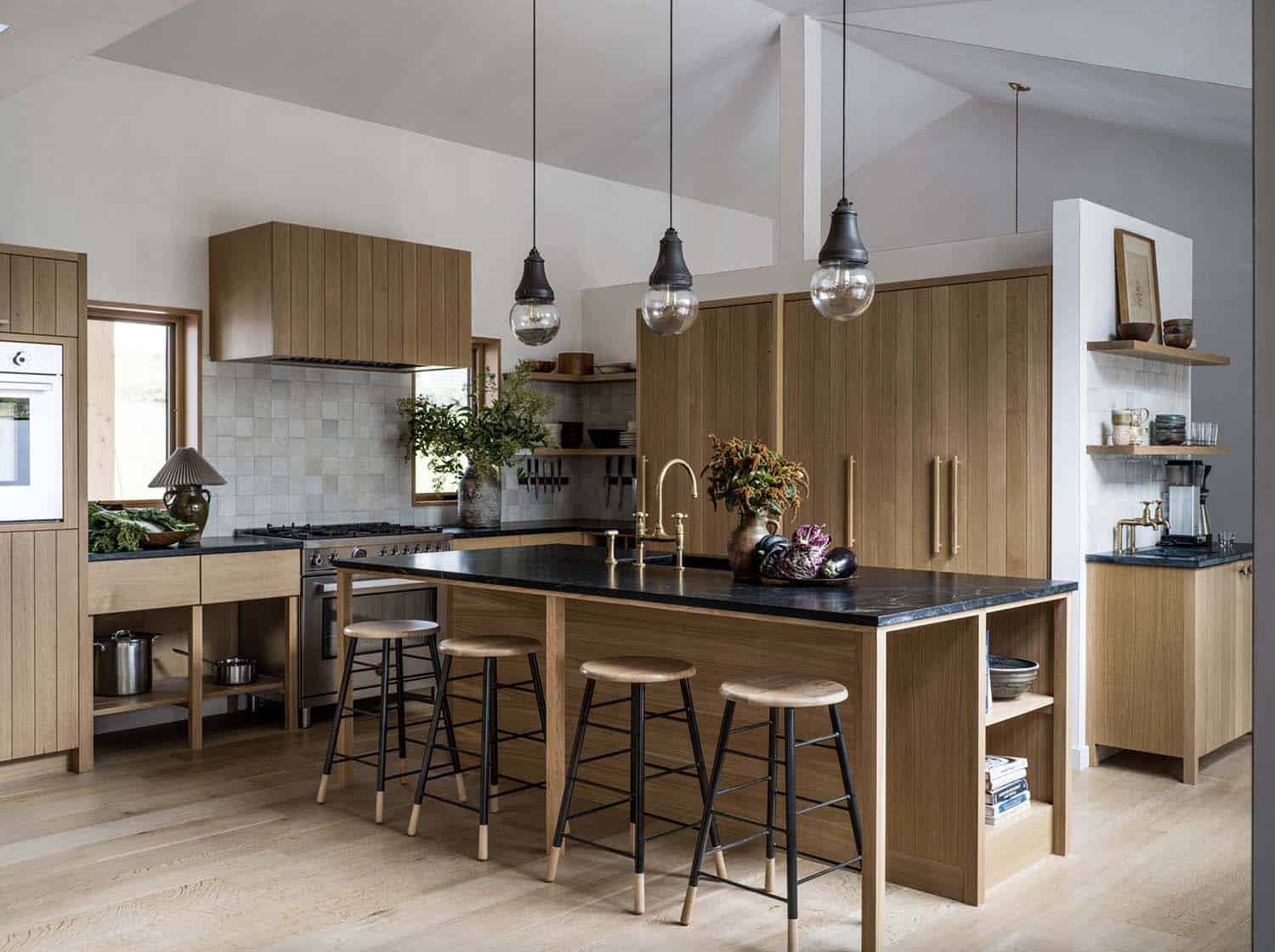
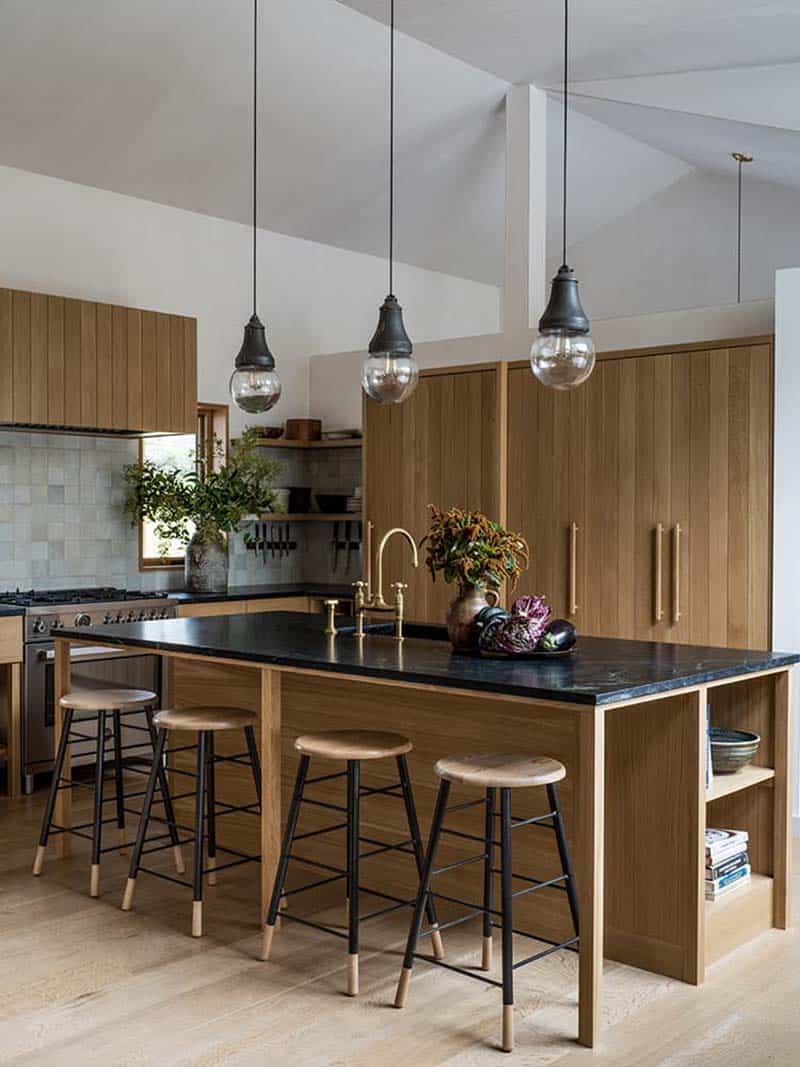
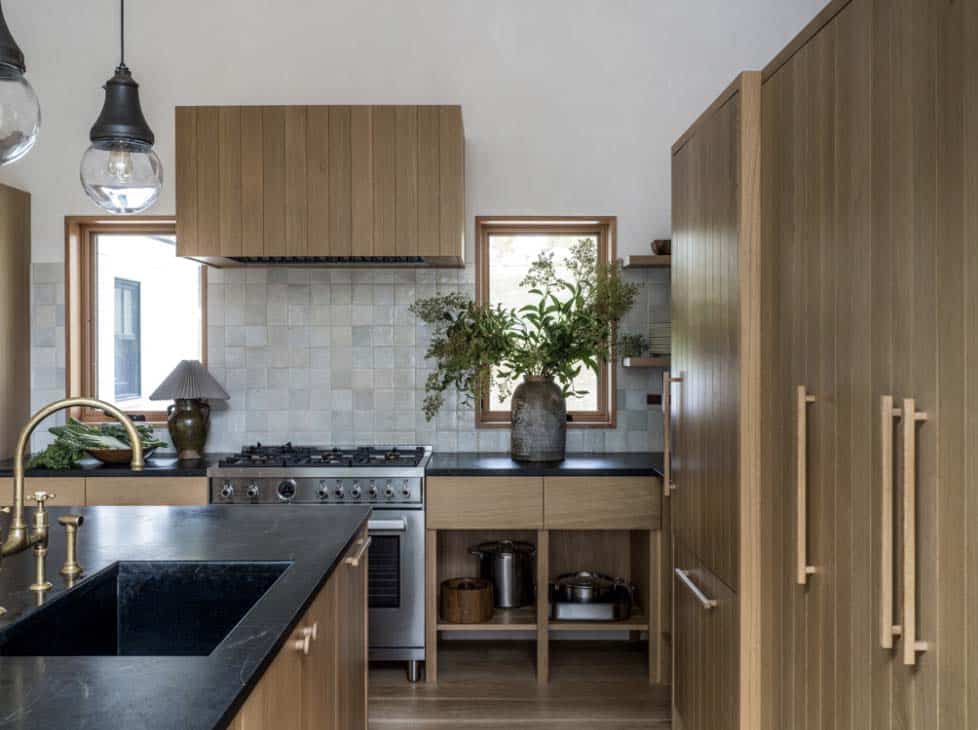
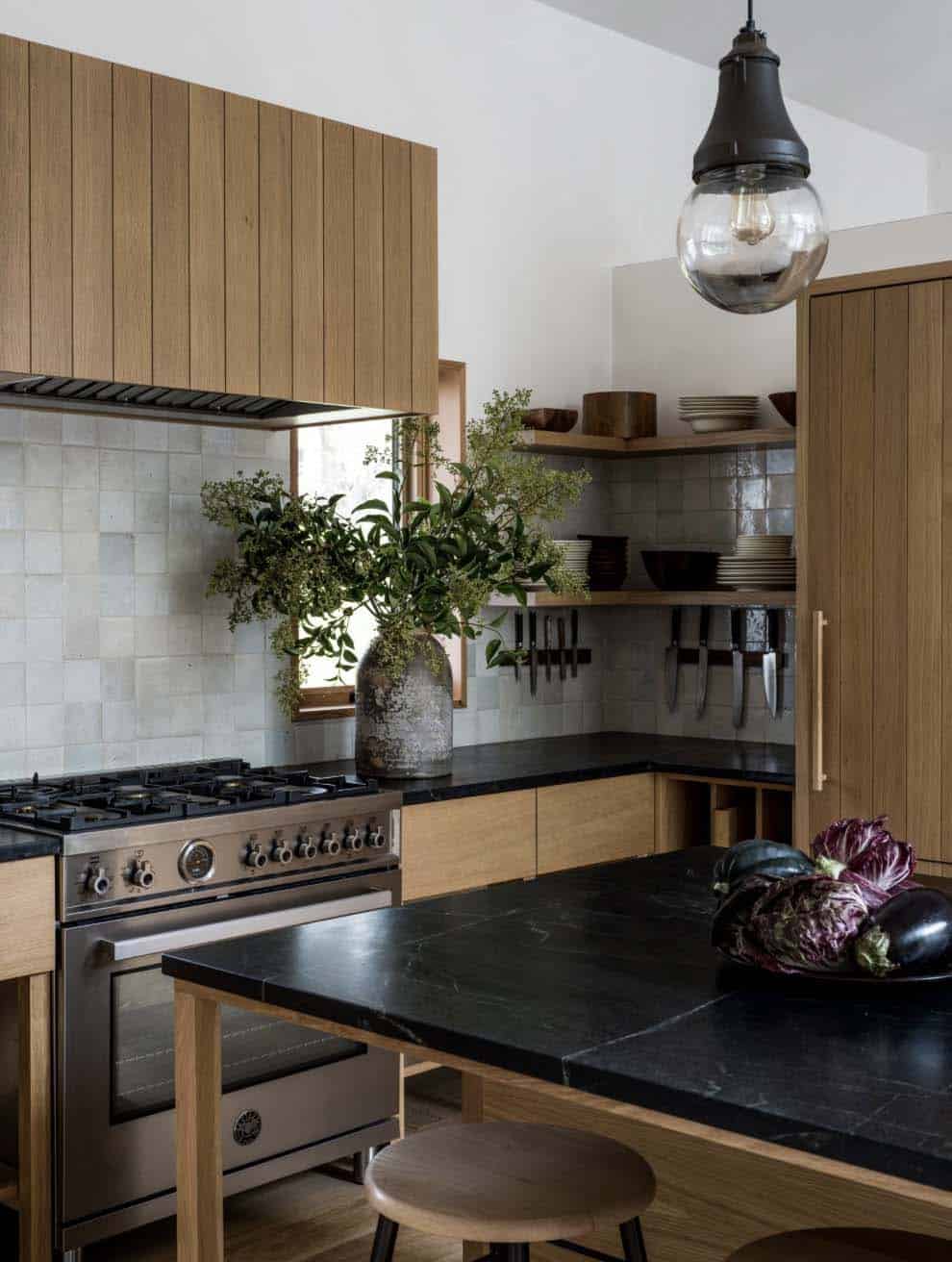
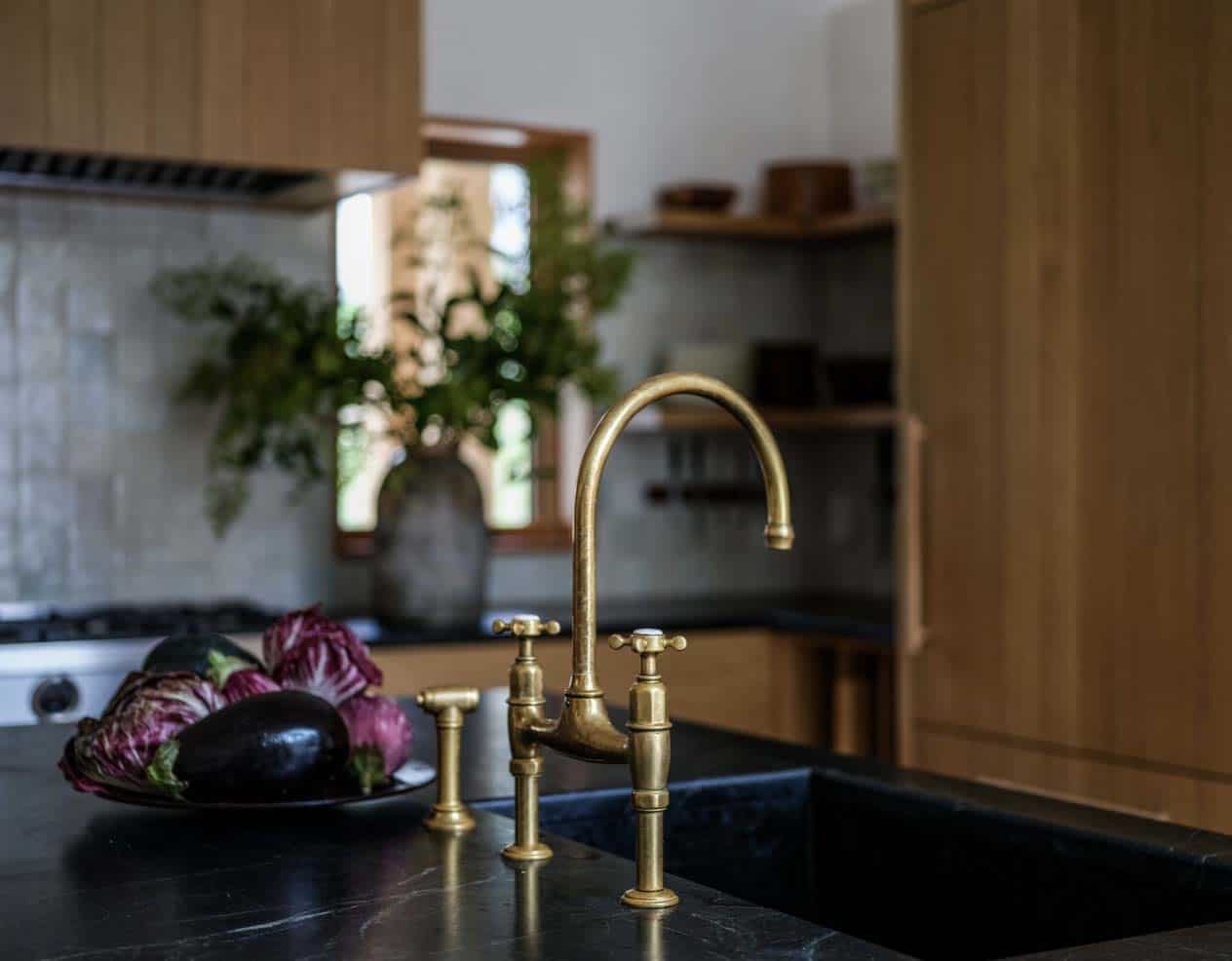
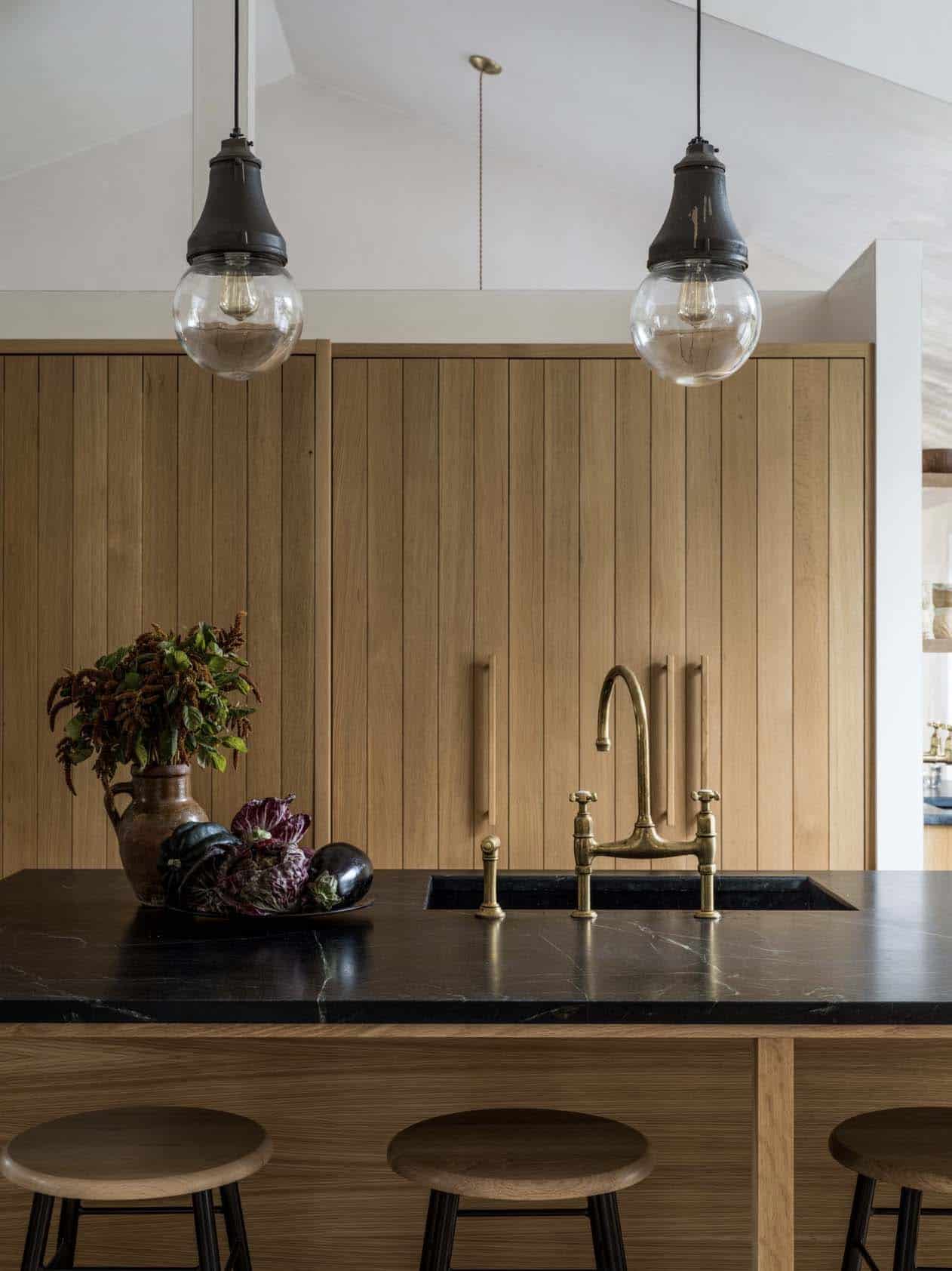
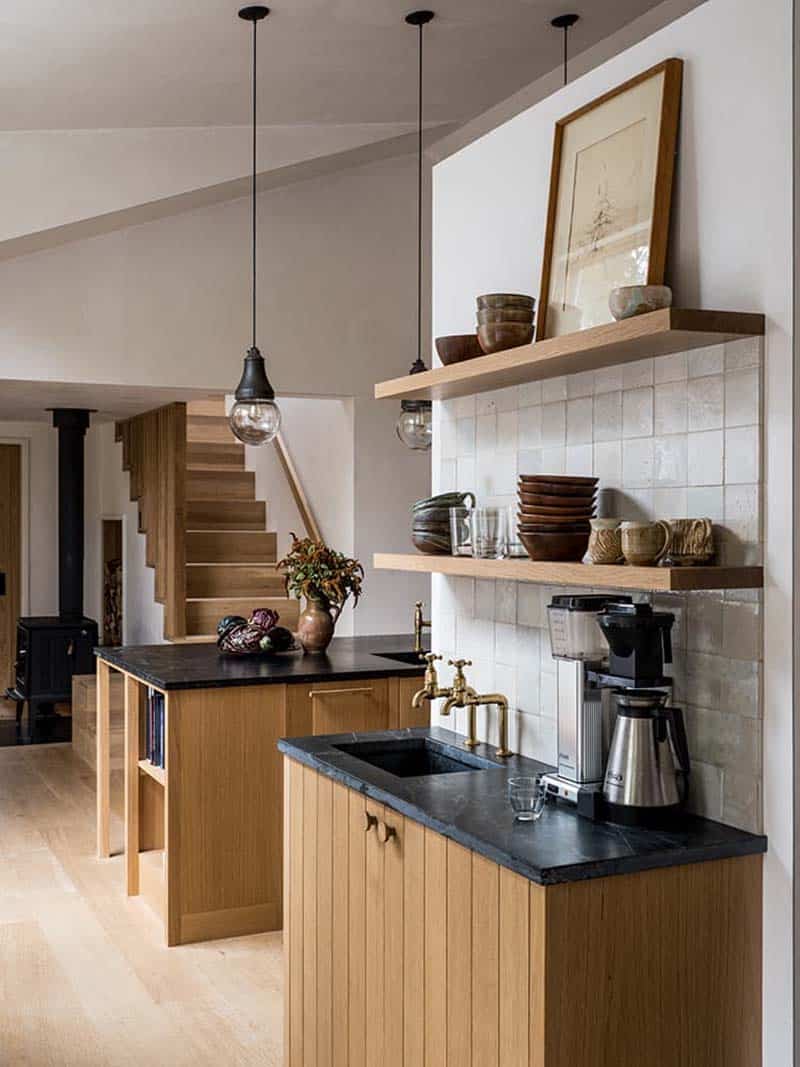
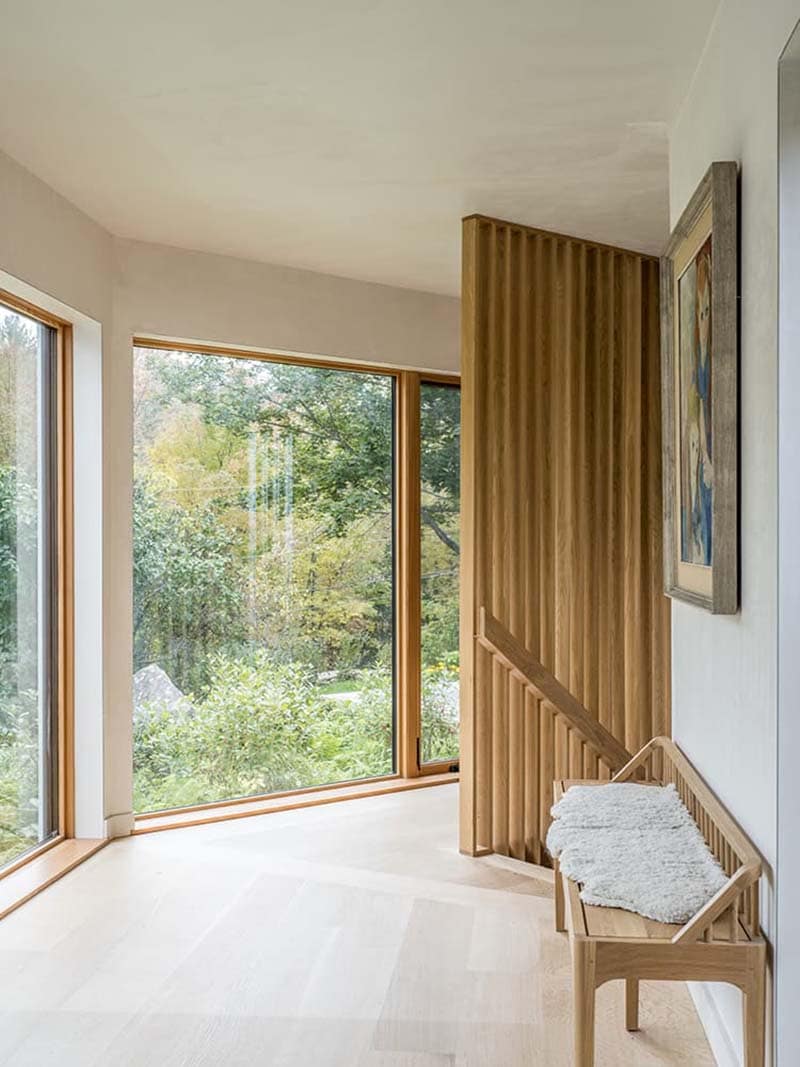
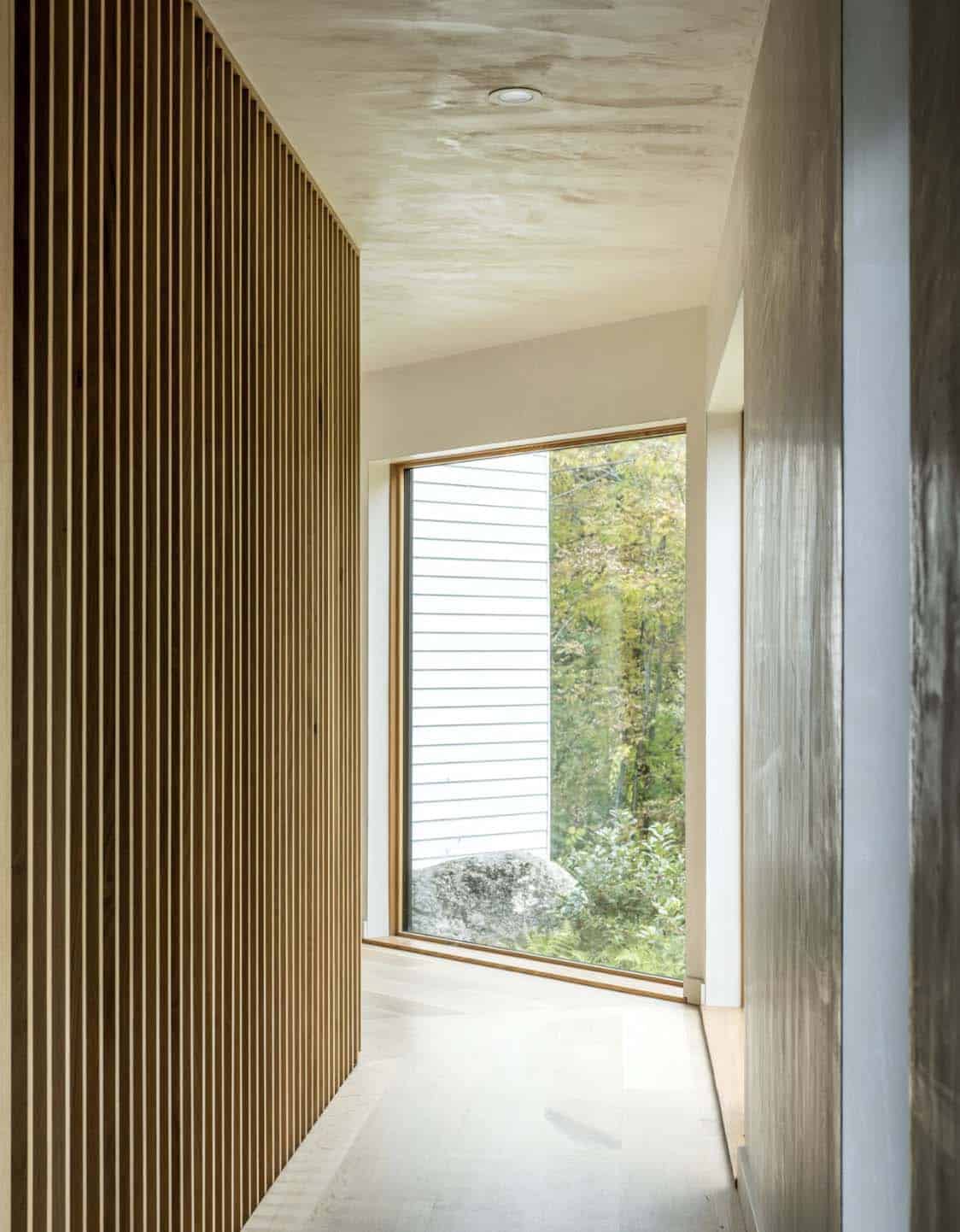


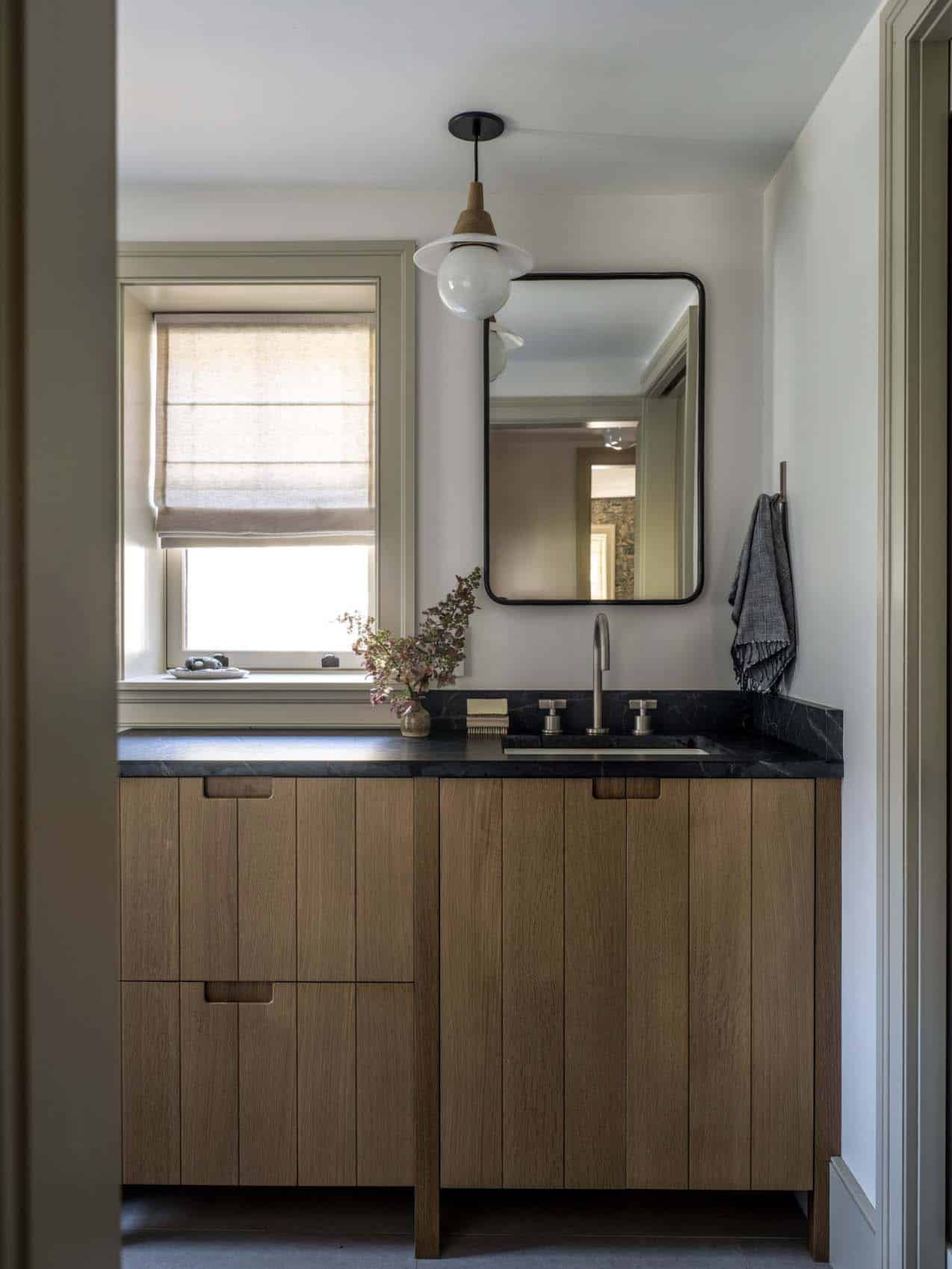
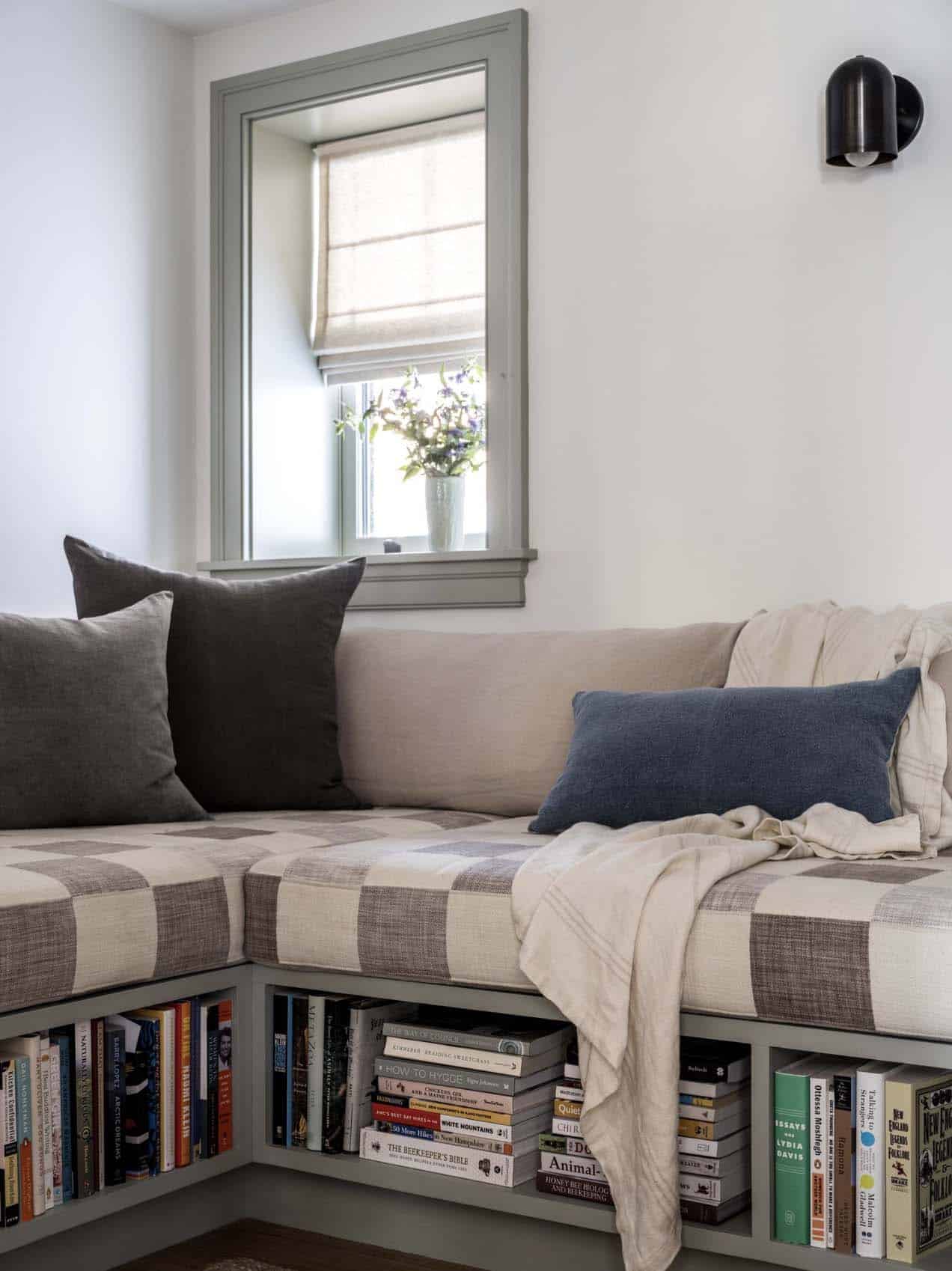

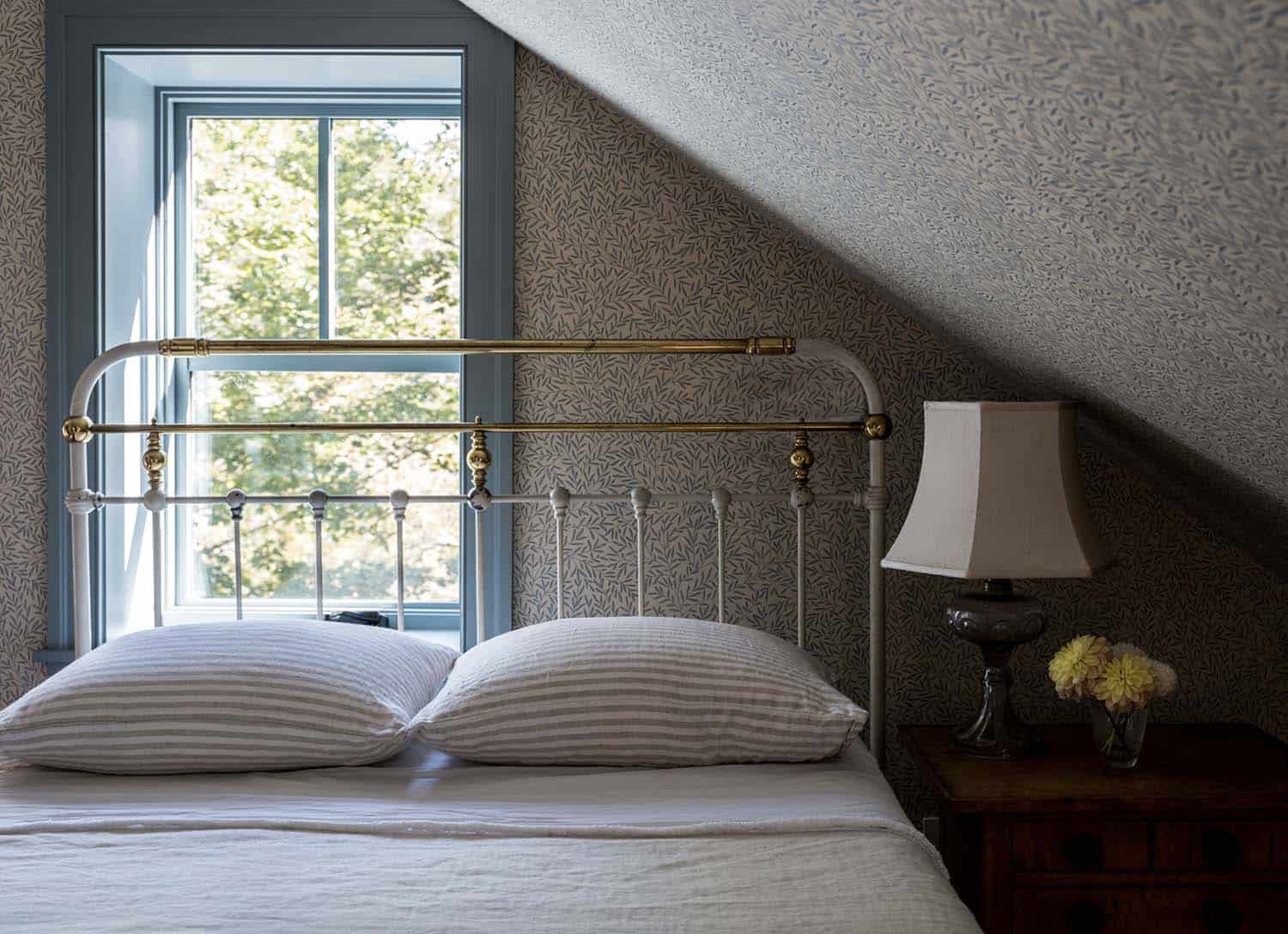
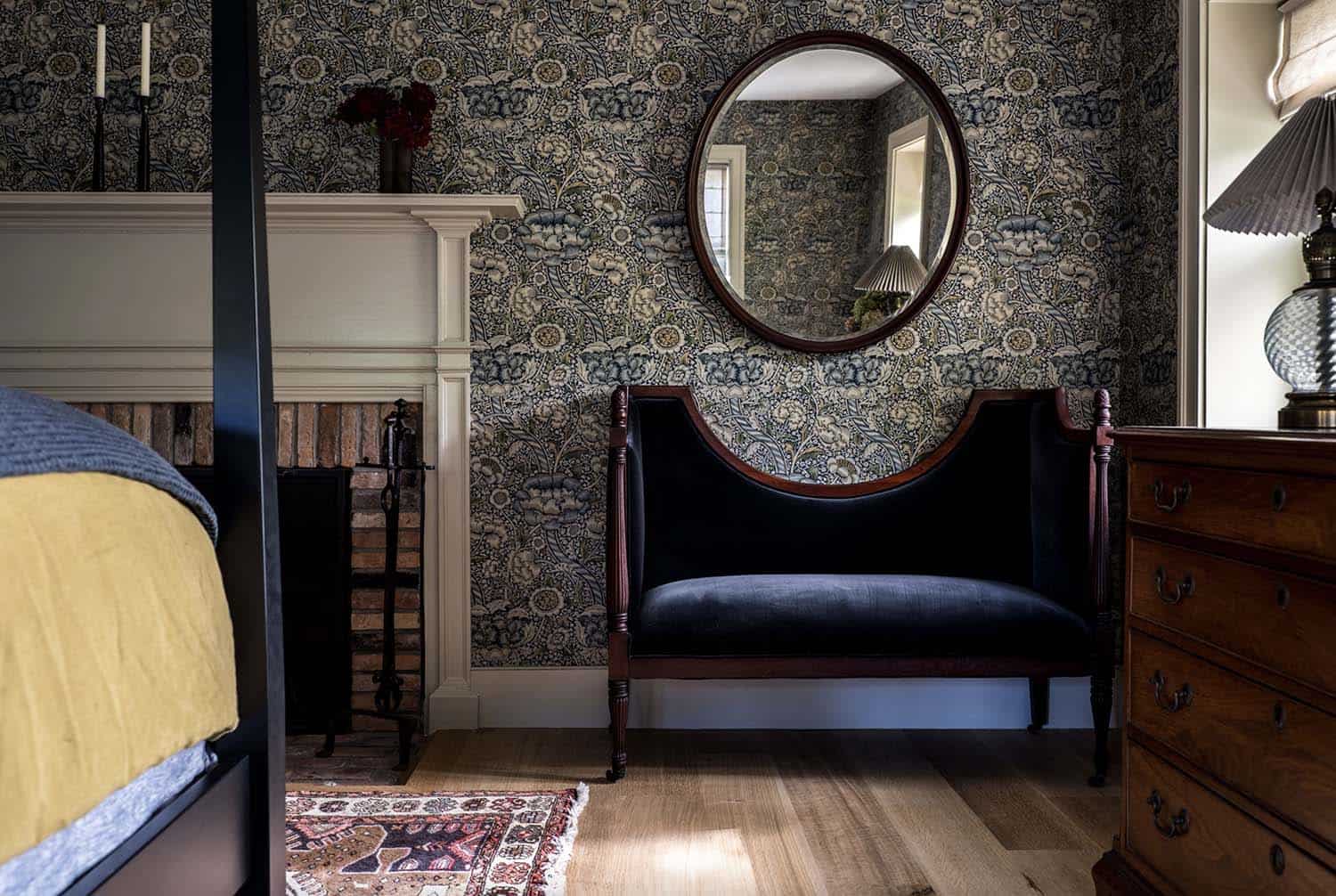
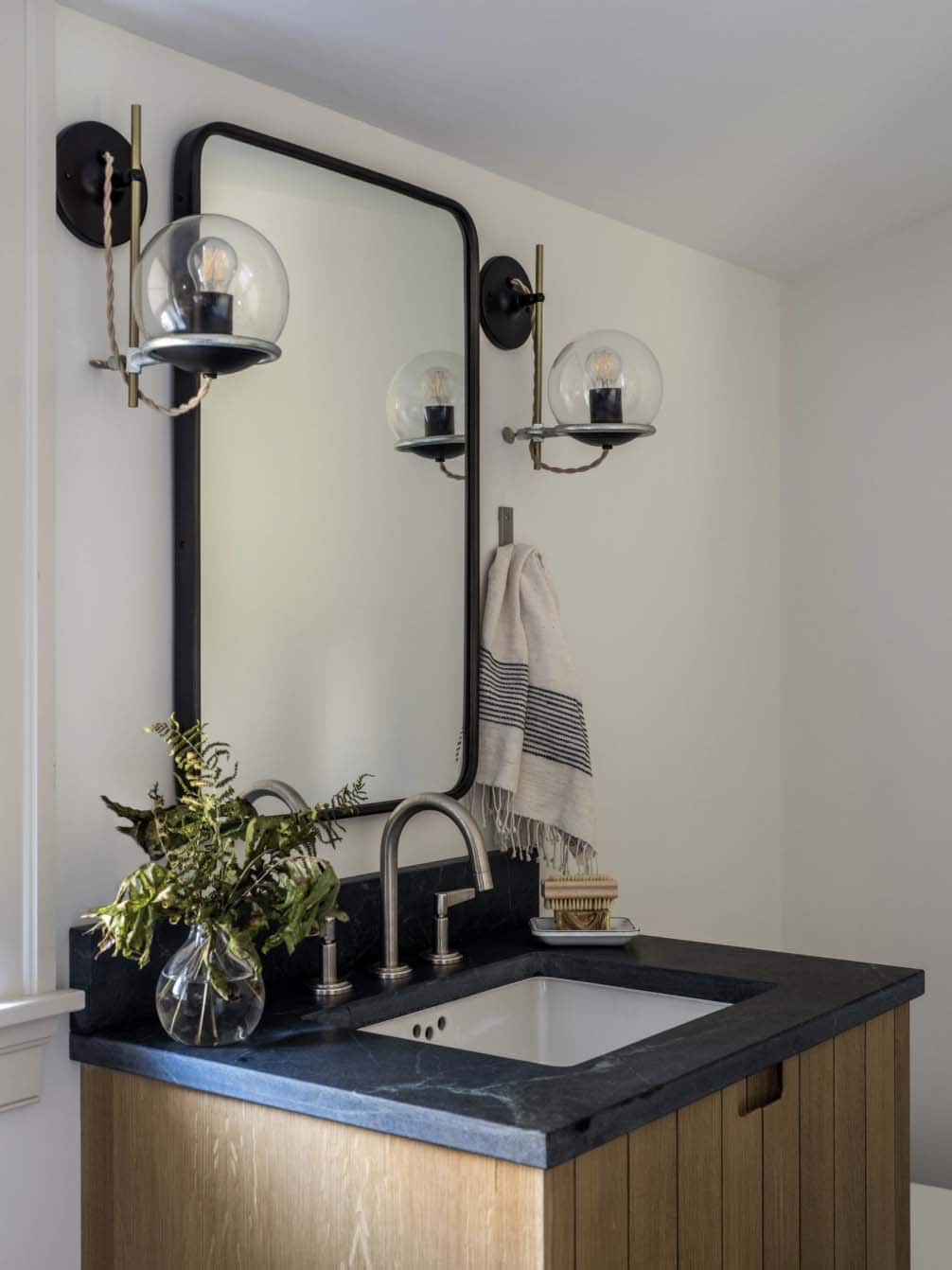

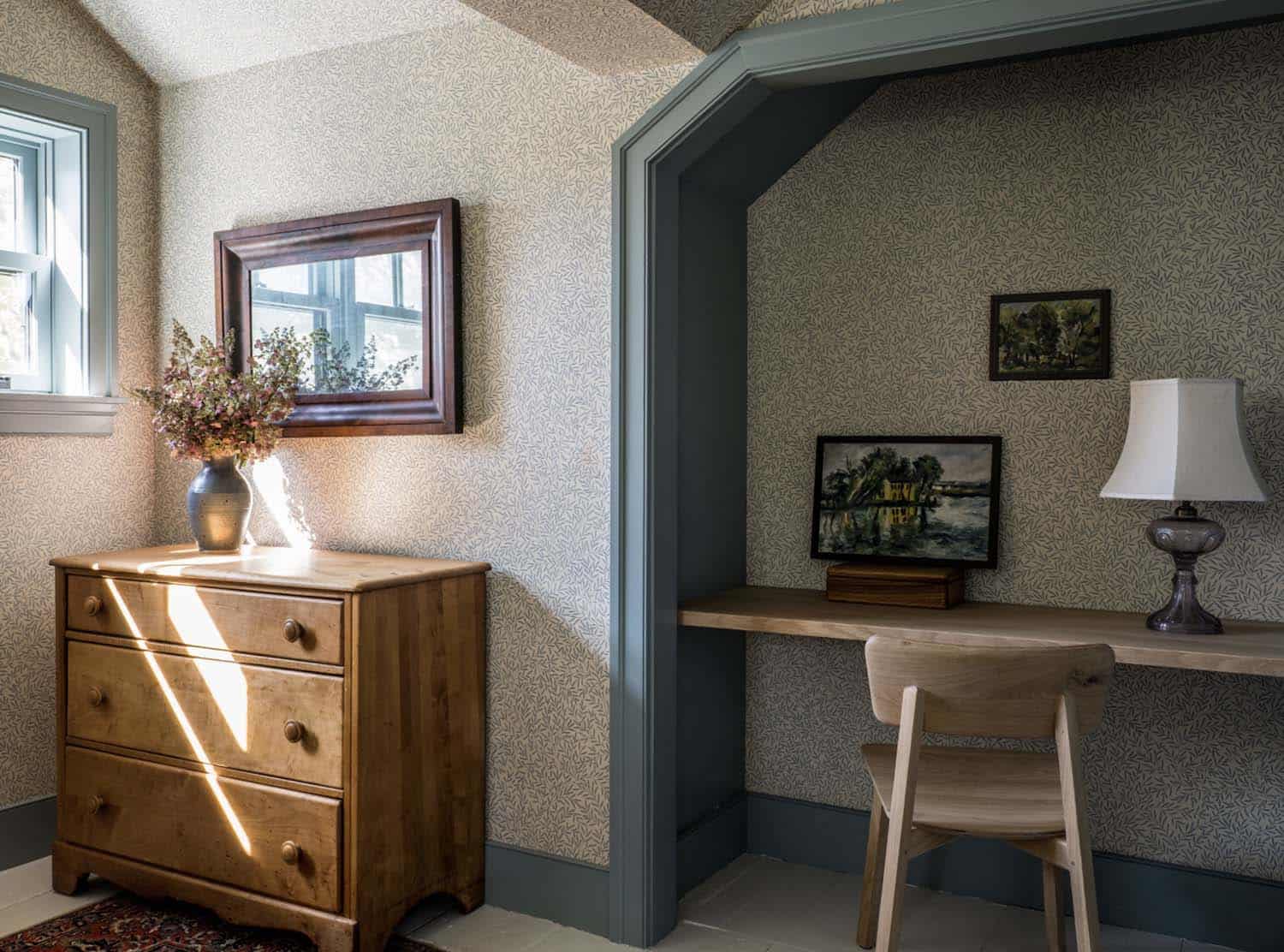
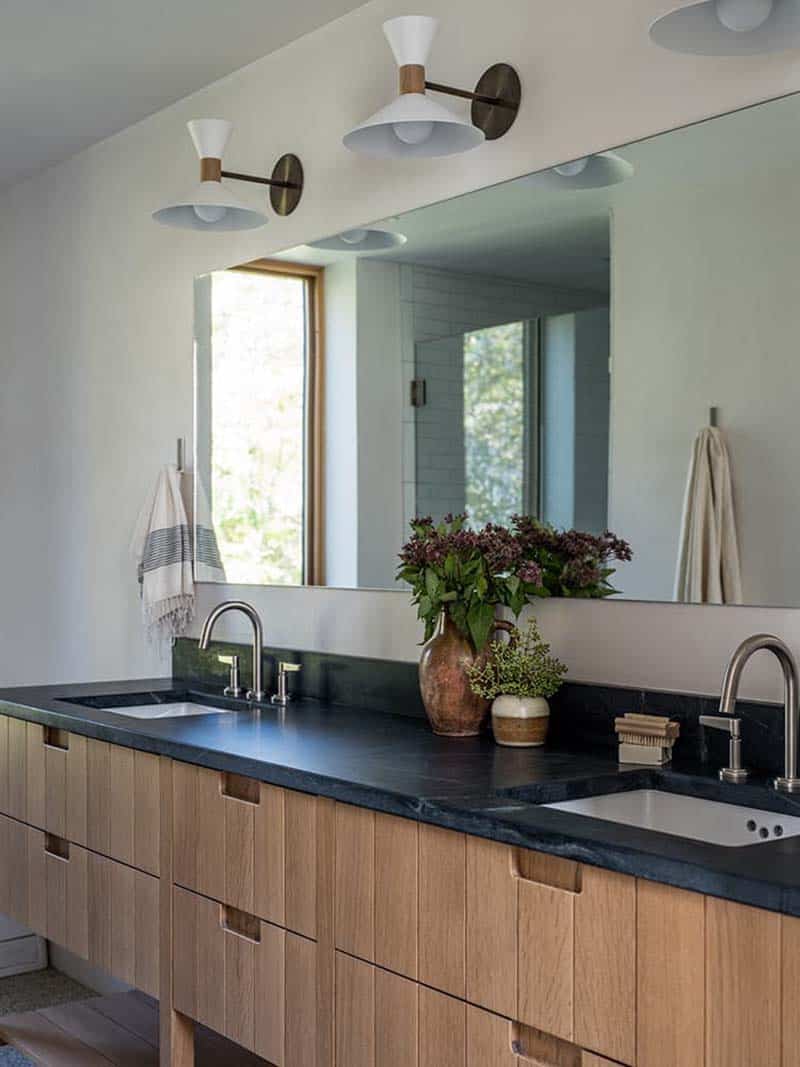
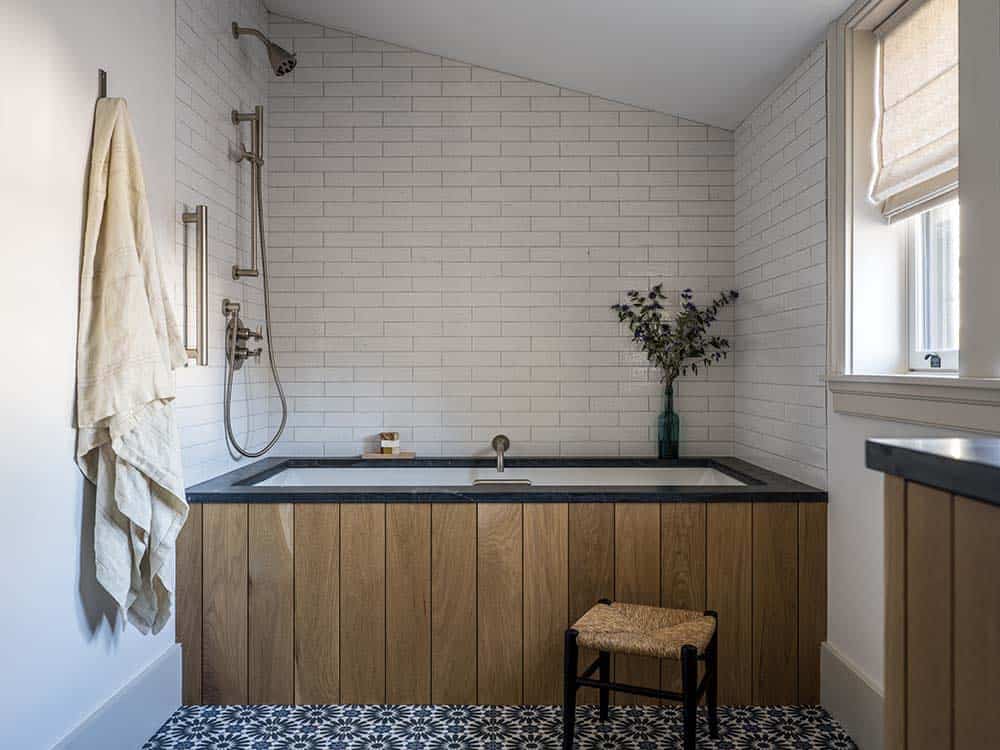
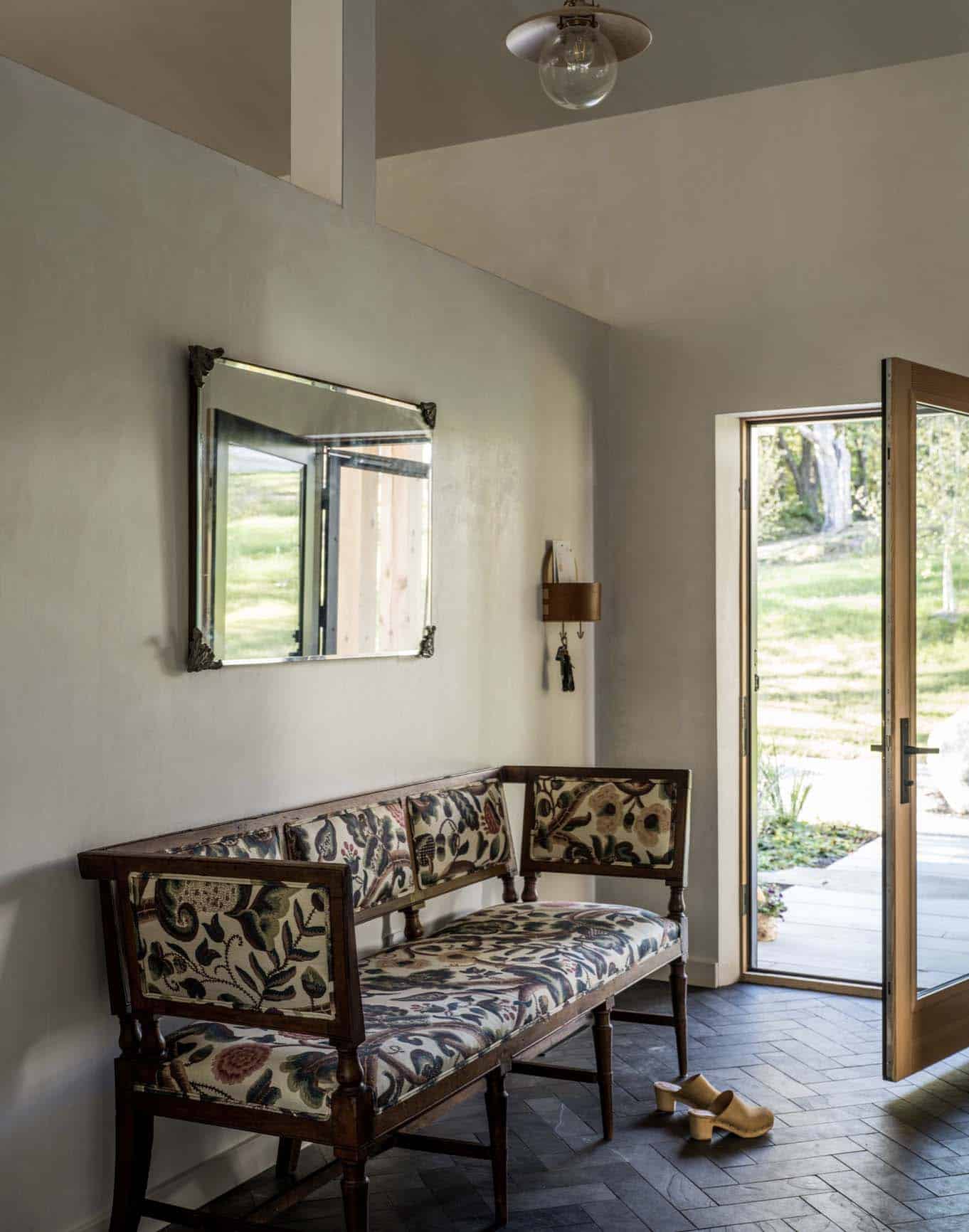
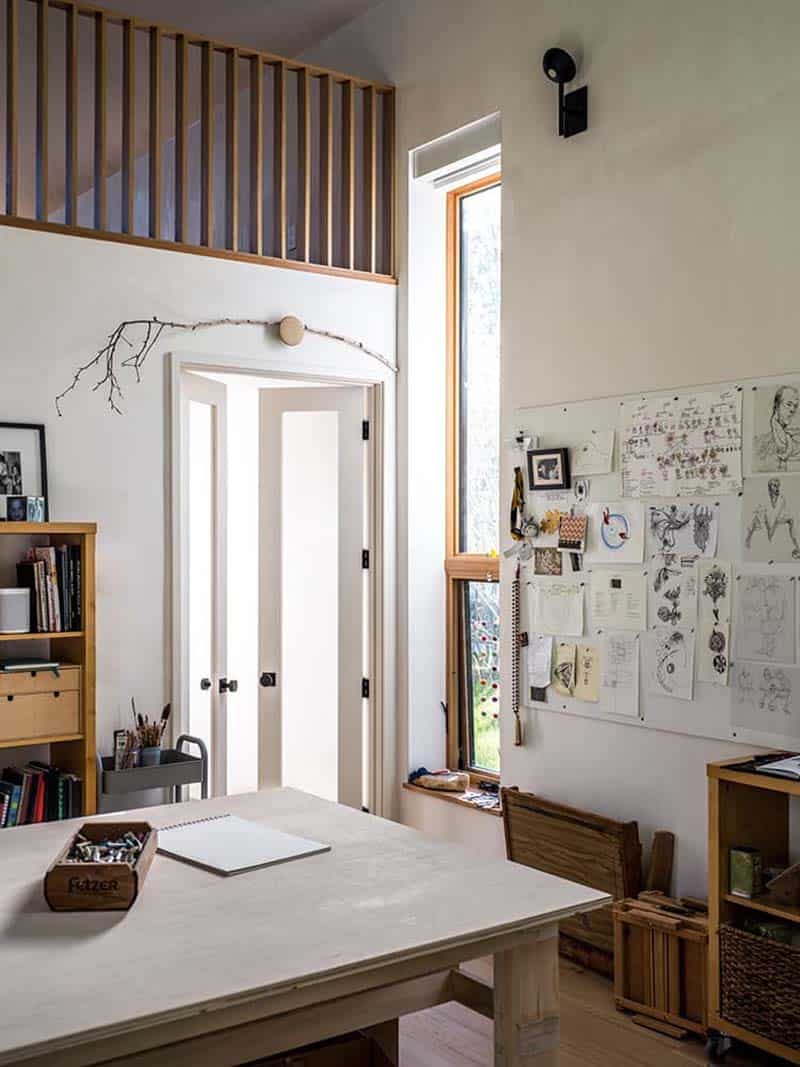
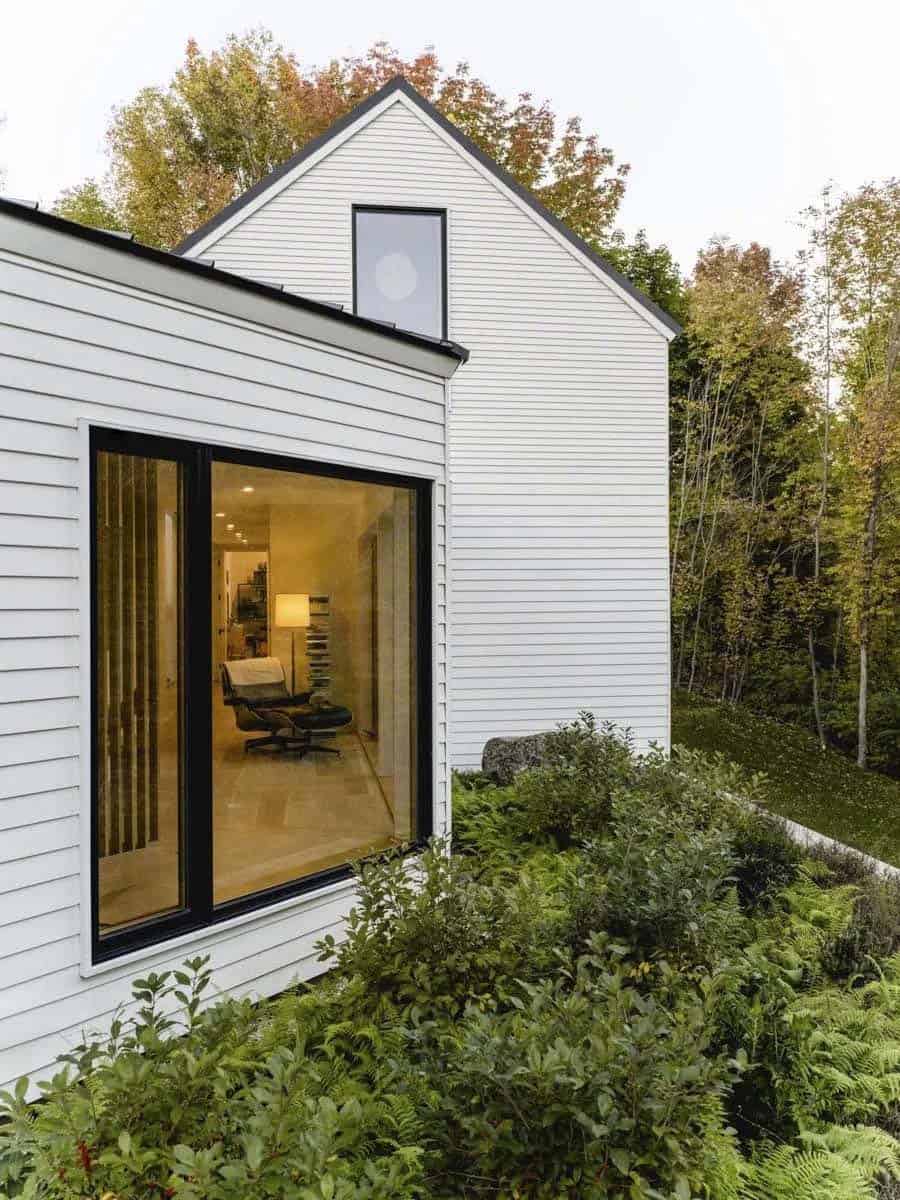
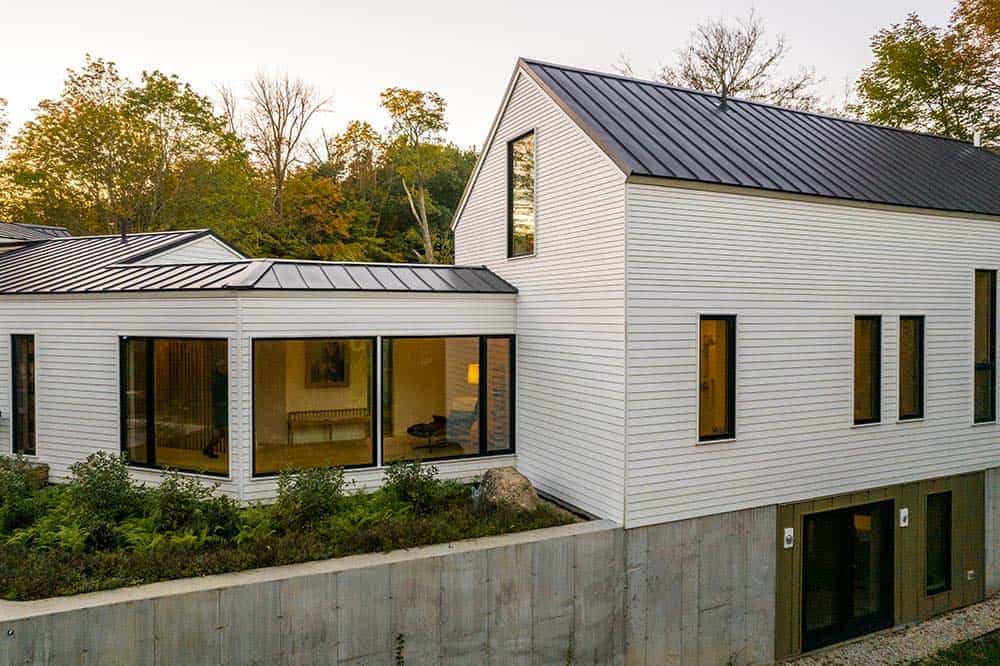
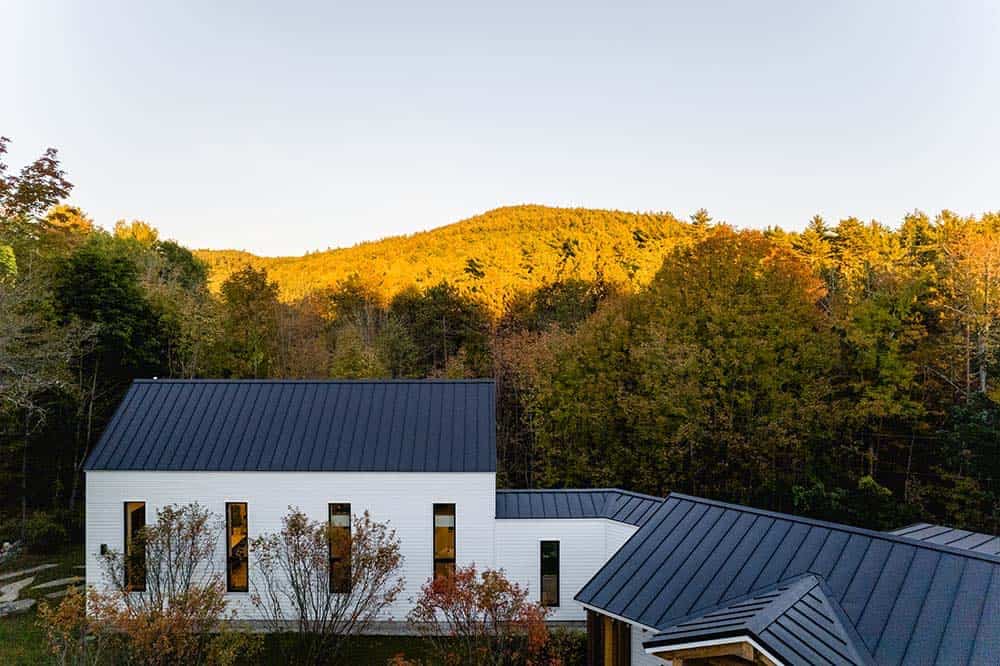
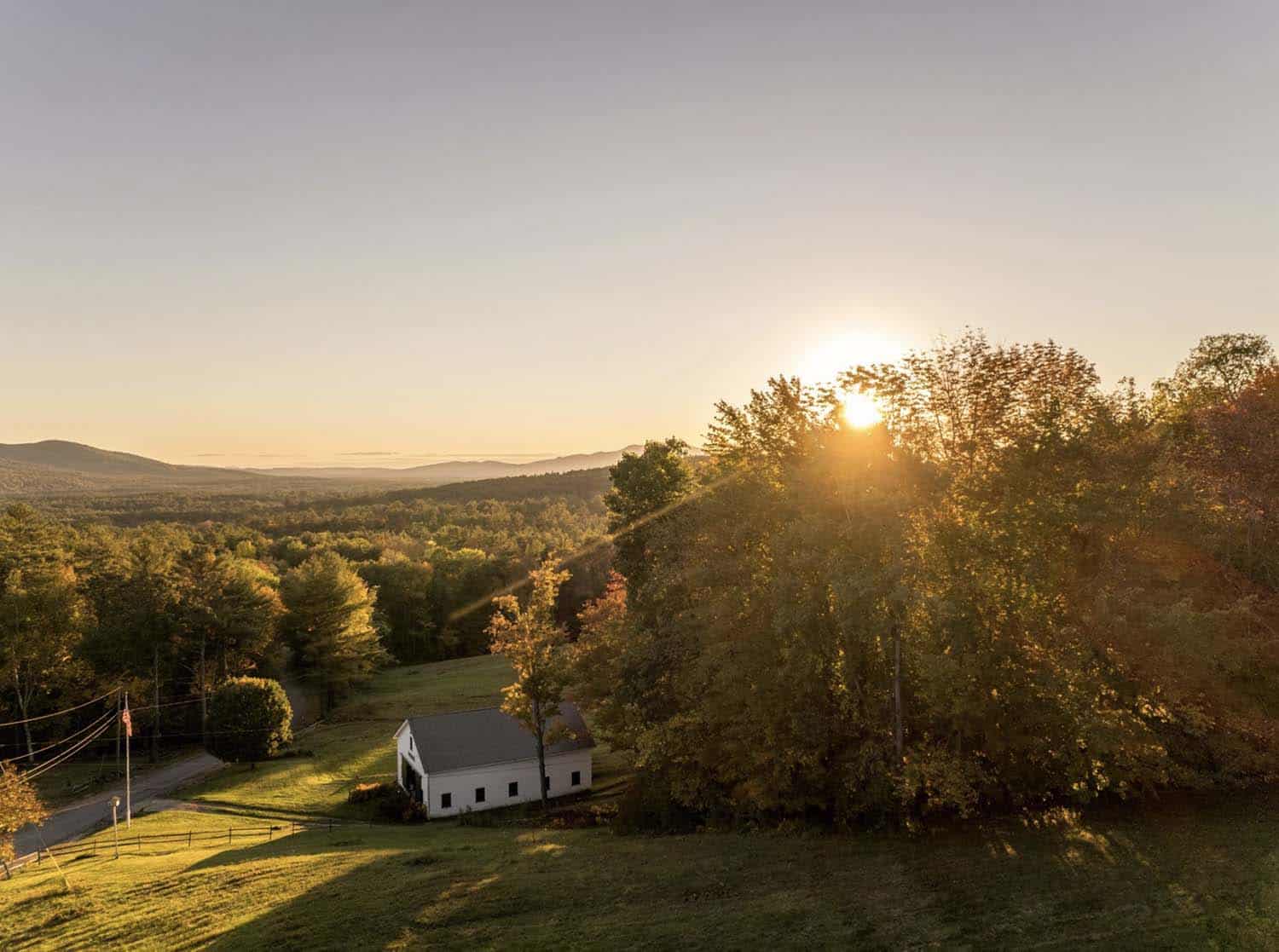

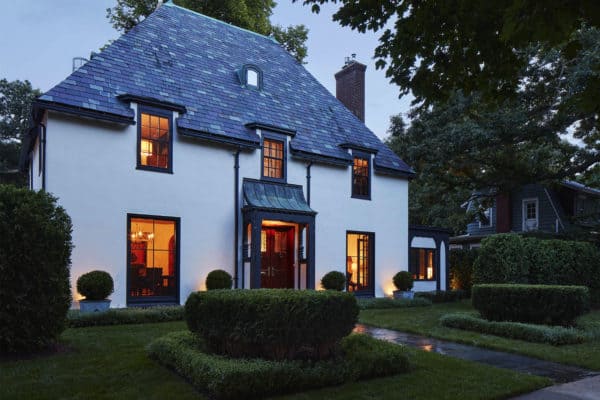

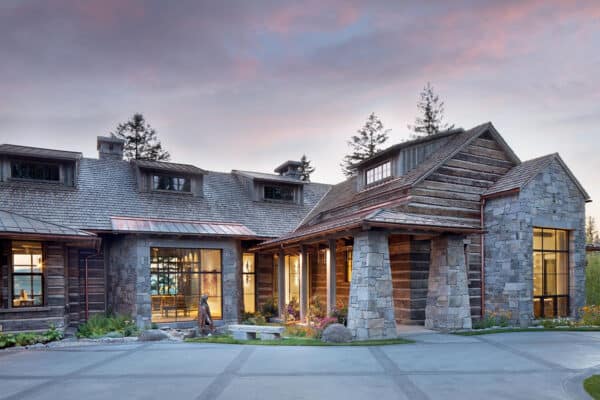


1 comment